#tf idw character analysis
Text
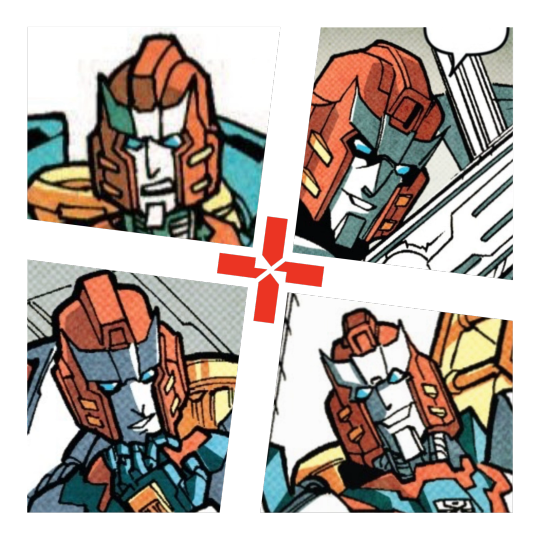
Medic, Maverick, Maniac, Murderer: Understanding Pharma
First thing’s first: I love Pharma, dearly.
In all the time I’ve spent evaluating his character, I’ve mainly focused on what can be worked out about who he is as an individual: his core sense of self, psychological drives, subjective worldview, etc.
When all else is stripped away, who is Pharma?
This treatise is the product of obsessing over Pharma, analyzing canon (and extras), and reading as many different perspectives on his character from fans across the fandom. The post is long, so for those of you who balk at the thought of reading a shortfic’s worth of Pharma thoughts, feel free to read the TL;DR (Conclusion) at the end and then decide if the full read is worth your time. Also, a premium reading experience is available in the form of the original Google Doc version.
As you read, keep in mind that this is primarily a mix of psychoanalysis, evidence-based examination, and speculation—not moral, ethical, or sociological commentary. The goal is to examine Pharma’s psychological drives and core values, and each of his appearances in the context of those. All other types of evaluation are up to readers.
Now, take your victim blaming-allergy meds (just in case); remove your black-and-white thinking caps; and leave your personal morality lenses at the door.
Psychological Drives & Core Values
Why does Pharma act the way he does? What gives him a reason to keep living? What are his personal priorities?
At the beginning of the Delphi arc, First Aid establishes Pharma as a “control freak” and someone who “thinks he’s an expert on everything.”

Now, First Aid has a habit of complaining about his bosses, but on both points, there’s canon evidence to back them both.
Expertise and Intellect
Throughout the Delphi and Luna 1 arcs, it’s established that Pharma is a skilled and brilliant doctor.
He once performed a 4-way fuel pump transplant, donating his own fuel pump in the process. (see above panel)
Later, he invented a soundbomb that left an echo laced with a virus and invented an antidote to that virus:

And on Luna 1, he was on the edge of finding a cure for Cybercrosis, based on the fact that Swerve was able to formulate a cure from his notes.
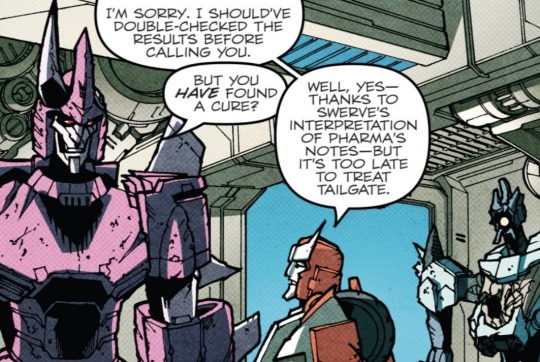
More than being a doctor, Pharma lives for intellectual and scientific achievement as a physician scientist. He feels most alive when he’s able to solve complex medical problems, and when his achievements are recognized by those whose opinion he considers important.
This is Pharma’s 'why.'
And even though he’s arrogant and enjoys praise, it’s not his primary motivation. He doesn’t need it in order to set his mind to whatever he’s interested in, although he’ll seek it from those he values most (i.e. Ratchet).
Pharma sees himself as less of a doctor, and more as a scientific innovator or medical maverick. The practice of medicine is primarily a catalyst for his creativity and intellect; it’s not an end in and of itself like it is for someone like Ratchet or First Aid.
First Aid’s observation of Pharma can be better phrased as, “[Pharma] thinks he’s an expert on everything medical”—because he’s not so driven by achievement and admiration that he’ll grovel at the feet of strangers and get good at something he doesn’t personally find interesting. The only time we see him express a desire for praise is when he’s around Ratchet—someone he holds in high regard for both personal and professional reasons. This makes sense since Ratchet is one of the only people who can give Pharma any kind of competition within what he considers to be his area of expertise.
“Each day we go to our work in the hope of discovering—in the hope that some one, no matter who, may find a solution of one of the pending great problems—and each succeeding day we return to our task with renewed ardor; and even if we are unsuccessful, our work has not been in vain, for in these strivings, in these efforts, we have found hours of untold pleasure, and we have directed our energies to the benefit of mankind.” —Nikola Tesla
Ego
Without question, Pharma has an inflated ego, but having an inflated sense of self doesn’t automatically mean a person is a full-blown narcissist or that they are totally uncaring.
Every personality trait exists on a spectrum. Yes, Pharma is arrogant, but the presence of arrogance doesn’t automatically and completely cancel out all “positive” traits. (For fun, check out studies on Dark Tetrad and Light Triad personality traits.)
People are complex. Arrogance can coexist with genuine kindness, ruthlessness can coexist with deep compassion, etc.
Whether Pharma exhibits genuine kindness is up to each reader’s interpretation of what little canon material exists, but the point is: Pharma’s arrogance doesn’t automatically rule out the possibility of authentic “positive” traits.
Controlling Tendencies
Pharma is comfortable pulling the power card and using it to dump what he sees as uninteresting parts of medical practice on those below him:
“So Fisitron’s writing about the Wreckers’ elbows now, is he?” said Delphi’s Chief Medical Officer. “Come on, First Aid - get to it. You’ve got a Fader in Row 2 downstairs.” He squeezed the air with his finger and thumb. “He’s about this far from shutdown.” —from Bullets by James Roberts
However, there’s nothing in canon indicating he’s power-hungry in a megalomaniacal sense. He’s not Starscream or Megatron; he doesn’t seek political or social power. In fact, he seems perfectly happy hiding away in a lab or medibay by himself so he can direct all his energy to solving issues and achieving the so-called ‘impossible’ within the field of medicine:

The ways in which Pharma exercises power and control are through his expertise, and his administrative/management skills. That’s it.
Self-confidence
Pharma’s arrogance and controlling tendencies don’t seem to be a mask—like he’s trying to compensate for some sense of lack (in those areas). Yes, he fears failure, and yes, he displays some insecurity when Ratchet questions his competence. But at every other point and in every other way, Pharma is unapologetically self-confident. He’s fully self-assured of his intellectual prowess and problem-solving capabilities; he knows what he knows, and he also knows what he doesn’t know.

Pharma’s arrogance and desire for control don’t stem from a hidden lack of confidence or a hunger for power on its own. They stem from the fact that he genuinely sees himself as the best person for the work he does. He trusts himself above anyone else to solve problems that come his way—medical or otherwise (within limits).
Elitism vs. Superiority
I’ve always read Pharma as having an elitist attitude, but not in the social stratification sense:
elitist (adj.) relating to or supporting the view that a society or system should be led by an elite.
There’s no evidence that Pharma believes an elite class of people should hold the most power. Instead, Pharma’s “elitism” is actually an individualistic sense of superiority. It’s centered on him alone, and is tied to his capabilities as a physician scientist and surgeon.
Pharma sees himself as the best of the best and makes sure everyone knows it—sometimes through his words, but mostly by his conduct in the field of medicine. This, paired with Pharma’s natural temperament, doesn’t exactly make him socially popular—inside or outside of medicine:

One could argue that the “personality” Lockdown is referring to was a result of all Pharma had suffered at Delphi and Luna 1, but just as easily, one could argue he was always a bit difficult to get along with, and that his traumatic experiences merely magnified his already-present psychological patterns. Personally, I like the latter interpretation because it’s a flaw that makes Pharma a more interesting character no matter his mental state.
Everyone reacts differently to real and perceived social rejection. Some are so concerned about it that they’ll try anything to belong; others genuinely don’t care, and they continue as usual; and still others cope by shifting their mindset and developing a sense of pride in being an outsider.
There’s no evidence for this in canon, but I believe it’s within reasonable characterization boundaries to headcanon Pharma as being in the second or third category.
With either of those two mindsets, a sense of superiority can develop, or even be an inciting factor. Either someone sees themselves as genuinely superior to the majority and doesn’t mind when this alienates them from people, or they convince themselves they’re superior because the pain of accepting they were rejected for who they are is too much to handle.
Whatever the case, the point is, having an “elitist” attitude isn’t necessarily rooted in a sociological or ideological belief. Sometimes, individuals just see something in themselves that—to them—justifies a sense of personal superiority. A quick glance at Pharma’s canon appearances makes it clear he holds such a view of himself, at least to some degree.
Morality and Compassion
When Pharma first shows up in canon, he’s working at the New Institute. A lot of questionable things took place there on a regular basis—things Pharma would have been aware of, to some degree. However, his presence at the Institute doesn’t automatically mean he agreed with everything happening. Depending on how strongly someone feels about something, some people are content to disagree in silence. Not everyone who seeks employment considers it a priority that the establishment they work for aligns perfectly with their moral values. After all, there are other reasons to take a job: financial benefits, exclusive educational and career opportunities, pure convenience, etc.
I’m not here to say either way whether Pharma’s willingness to turn a blind eye to the events at the New Institute was wrong or right; that’s up to each reader to decide for themselves. However, Pharma’s choice to remain employed at the Institute for some time can say something about him as a character: his priority as a doctor and person is not to take care of everyone he encounters, or to act as some kind of moral or ethical authority.
This isn’t to say Pharma won’t ever stand up for something he regards as right or push back against something he sees as wrong, “off screen.” It’s just that everything in canon points more to a tendency to choose his battles instead of acting immediately on any moral sense the way someone like Optimus or Ratchet might.
This also isn’t to say Pharma doesn’t care about saving lives, but from what little is shown of him before Delphi, it’s hard to say how much he cared. Ratchet confirms later that Pharma was an excellent doctor for most of his life, but all that tells us is he was an excellent doctor; it says nothing about his internal attitude toward his work or patients.
However, inferences can be made based on doctors in our own world:
Being a doctor—especially one in trauma care—is far from easy. It takes a lot out of a person, and there are very few people who last in the profession for a long time. Most medical professionals fall into one of the following categories:
People possessing a strong will that’s coupled with an unwavering passion for taking care of others (the public’s favorite)
People who naturally have, or develop, an ability to switch their empathy off and on at will, or build walls around it—also possessing a strong will (the ideal)
People who naturally have a limited capacity for empathy (the one the public hates to acknowledge)
People with a strong social and professional support system (the necessary, but underutilized and underappreciated factor)
Of course, even if a person has one or more of the above, burnout can and does still happen, but individuals who have at least one have the best chances of surviving and thriving amidst the demands of the majority of medical professions.
As far as is shown in canon, Pharma never had a strong support system—either circumstantially or by choice—so something else was keeping him in medicine.
Pharma shows concern for both Tumbler (Chromedome) and Hubcap:
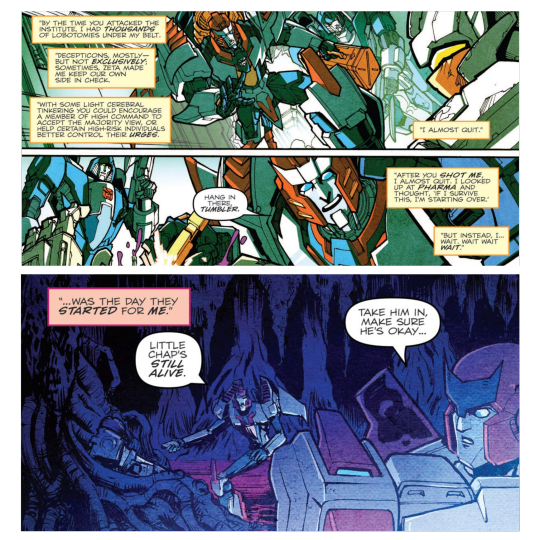
But even though he obviously cared enough to step in, neither instance makes a strong case for a capacity for empathy beyond the “average” or “norm.” Performing a job well is a lot different from being personally invested in the work.
Based on everything up to this point, and this later comment from Pharma, about Ratchet…
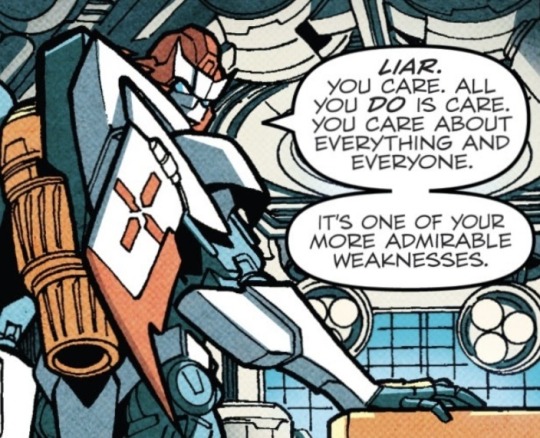
…Pharma has probably never shared the same I-care-about-everything-and-everyone view of the world. Instead, it’s more likely that Pharma holds a more rational view of his work and patients.
One of the first things learned in medicine, especially in trauma medicine, is that you can’t help or save everyone, and to hold yourself to that standard can destroy you quickly if you have a certain temperament or lack healthy boundaries for your empathy.
“There are times when it may seem as though I view sick or injured people not as living, breathing humans with feelings and emotions and people who love them, but simply as cases, as problems to be solved. And that is absolutely true. It's not that I don't have empathy, but the hard fact is that as a doctor, and especially as a trauma surgeon, too much empathy can get in the way of your job and cause you to make decisions based not on sound medical judgment but on your own emotions. Sure, I've seen things that even years later can still make me choke up when I think of them: a little girl shot and killed, a shattered young Marine who shouldn't have died but did. But you can't choke up in the ER or the operating room. To be effective as a trauma surgeon, you have to put a layer of Kevlar around your heart.” —Dr. Peter Rhee, Trauma Red: The Making of a Surgeon in War and in America’s Cities*
Pharma may have learned this difficult truth earlier than Ratchet and developed a practical way of managing his empathy that comes across as “cold.” He may have always had an ability to put up walls around his spark. Or, he may have always had little to no capacity for empathy.
The fact that the morality lock on Tyrest’s portal prevented Pharma from passing through proves he felt guilty for what he’d done, and JRO confirmed this. Therefore, it’s safe to assume Pharma had some level of empathy for his former patients, suffering moral injury when he felt he had no other option but to start killing them.
Still, looking at Pharma’s psychological drives and his behavior throughout canon, it’s clear compassionate care and morality are subordinate to his other values and interests.
*I highly recommend this book, and learning about Dr. Rhee in general. He’s a huge inspiration of mine, and one of my main sources of inspiration when writing Pharma. Level-headed and capable, strong-willed, selectively empathetic, an excellent scientist, etc. He lives for the thrill of practicing medicine both on the floor and as an expert in his field who pushes trauma medicine to new heights through his research. He also takes great pride in his hands. Seriously—the man spent an entire paragraph and a half talking about his “good hands” and how they were one of two reasons he decided to go into trauma surgery. The other reason was that he “liked action and excitement, liked the feeling of being able to walk into a tough situation and take control.” (Sounds familiar…)
Delphi
First thing’s first: we don’t know how much Pharma did or didn’t know about the DJD before agreeing to take the Delphi assignment.
That far into the war, he would have known something about the DJD and their ways of terrorizing traitors and Autobots, but for whatever reason, he took the assignment anyway. Perhaps Prowl assured him the situation on Messatine would be monitored and that the security team would be enough. Perhaps he underestimated the DJD’s capabilities, or scale of territory, and thought he would be able to handle things on his own. Perhaps Prowl gave him no choice. Maybe it was all of these and more.
Whatever the case, according to JRO, Pharma didn’t hate Delphi before the incident with the DJD.
Word of god remains a touchy subject in fandom, but in this case, it’s important because it says two things:
The DJD left the Delphi medical team alone for some time.
Being on the edges of DJD territory didn’t automatically mean isolation and harassment by their hand.
On the second point, First Aid was free to come and go from Messatine as he pleased, seeing as he attended a medical conference at Kimia five years into his assignment at Delphi:
Five years ago [mid-Delphi assignment], the leader of the Wreckers had cornered him at a medical conference at Kimia, the space station that doubled as a weapons research facility. —from Bullets
And five years after that, he was able to not only contact Springer without delay about one of Agent 113’s bullets he’d discovered in an Autobot badge…
He raced upstairs to his computer terminal and typed in a certain frequency code for the second time in his life. A face appeared on the screen and grinned. “It’s me,” said First Aid. “And you're never gonna guess what I’ve got for you..!”
…but he was also able to meet up with Springer to hand off the bullet:
“Your friend has a funny way of making contact,” First Aid had said when he’d got in touch three days earlier, and he was right.
It’s not known if this handoff happened on or off world, but either way, the DJD didn’t interfere.
At some point, Tarn set his sights on Pharma and the Delphi team. Knowing the DJD, one can only imagine what Tarn used to show off his team’s capabilities and convince Pharma the best option was to cooperate.
In striking a deal with Tarn to keep the DJD away from Delphi, Pharma established his territory and ensured his continued security and the safety of his staff. As long as Tarn got his T-cogs, Pharma could continue on in relative peace. He could work his magic on bots that ended up at Delphi, carry out his management duties, and work on whatever projects or research he may have been conducting in his free time.
For whatever reason, after he first came into contact with Tarn, Pharma didn’t call for help. Communications were still operational, as Pharma wouldn’t have suggested contacting High Command about the Duobots if the team was aware of any comm malfunctions:
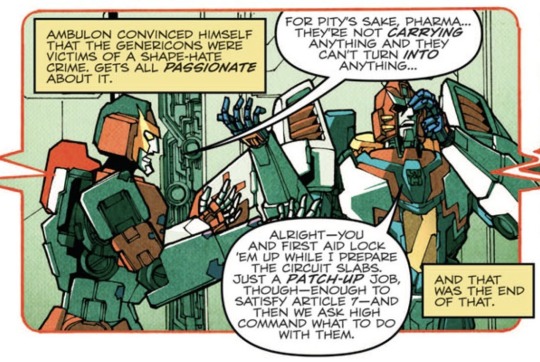
Also, First Aid later confirms that communications were fine until the Big Bang (soundbomb detonation):
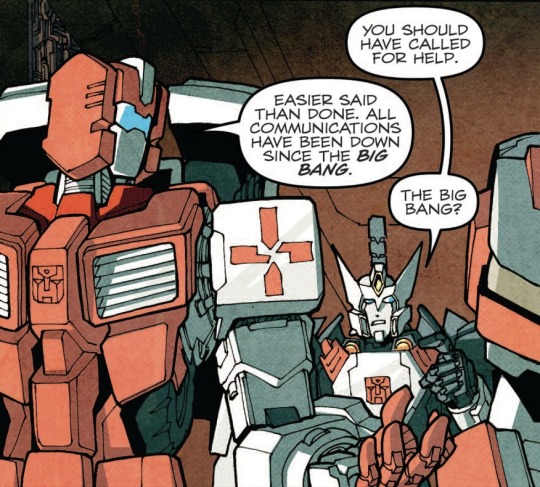
It’s always possible the DJD was monitoring the radio waves, but secure subspace frequencies exist, such as the Datalog Network First Aid used to send the datalog containing the death statistics:

Speaking of which, assuming First Aid sent the datalog with the statistics right when things started to get ‘weird,’ and before the Big Bang shut down comms, it only took—at most—a few days for them to reach Ratchet and Swerve on the Lost Light:

But back to Pharma not calling for help: for all of Prowl’s intel, contingency planning, and fretting over the security of Autobot territories, I find it hard to believe he would have stuck an Autobot medical team on the fringes of DJD territory without giving them some means of securely contacting the outside in case of issues.
But even if Prowl didn’t give Pharma a secure way to contact him or anyone else, and even if Pharma was convinced the DJD was monitoring regular communications, there were other ways he could have reached out for help. After all, the team wasn’t alone on Messatine. Like Pharma said, Prowl continued to send bots to defend the nucleon mines:
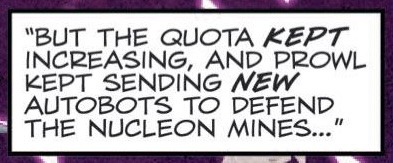
The Autobots had been mining nucleon for millions of years at this point, so I doubt the mined nucleon was just sitting in storage on Messatine; shipments of the stuff would have been sent off-world to wherever the Autobots needed it. Why not send a message for Prowl with someone leaving with one of those shipments? A message meant only to be sent over a call when absolutely certain they were out of range of the DJD’s potential monitoring.
Or, why not order in off-world medical supplies and send a message back with the delivery bot(s)?
There are two possible answers to this. One takes into account JRO’s word on the subject; the other is more intricate and speculative on my part, but it leads to the same place. So whatever your stance is on the validity of word of god, there’s an answer for you.
Answer one (word of god)
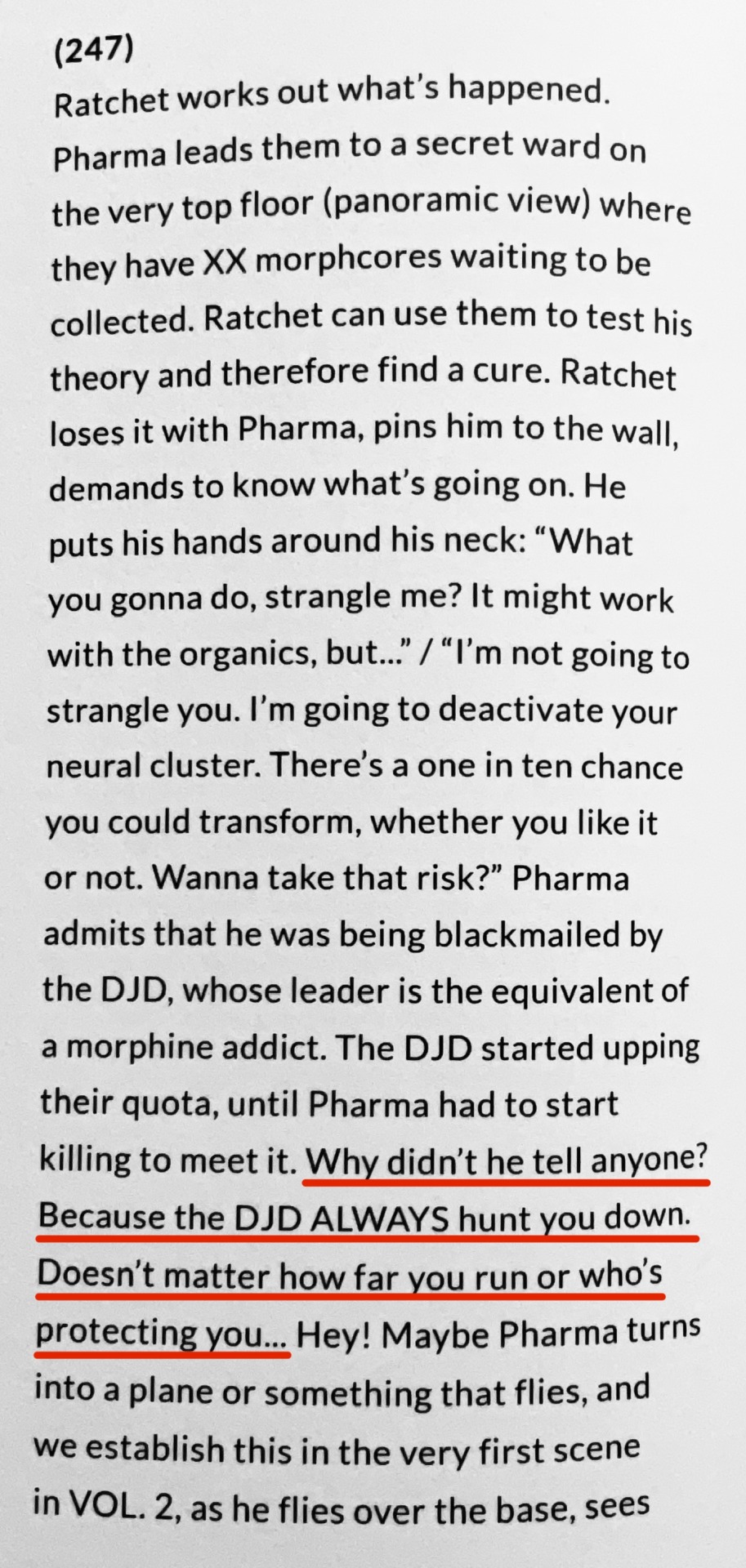
Simple as that. Pharma was aware of the scope of the DJD’s capabilities and relentlessness, and determined he was trapped prey.
Answer two (no word of god)
There are a few possible reasons Pharma didn’t call for help right away:
He was convinced all his other options would take too long and/or would still lead to him being put under suspicion. After all, being found to have harvested even a single T-cog from an already-dead patient for the DJD could have raised concerns that would lead to Pharma being investigated and/or having a mark put on his record.
He underestimated the severity of Tarn’s addiction, and was certain he could keep up with the T-cog demand without resorting to other means of harvesting, not realizing Tarn’s quota would increase later on.
He was already paranoid as a result of whatever mind games Tarn had set in motion at their first meeting, making Pharma think escape was futile.
Word of god or no word of god, there are clear reasons as to why Pharma ended up trapped. Most likely, it was a mix of all of the above.
Whatever was going on in Pharma’s mind before, he ended up in deeper trouble. Tarn increased his demand for T-cogs, and Pharma couldn’t keep up. By the time this happened, even if he had wanted to call for help, it was too late to do so without implicating himself. He reasoned his only option was to start killing patients to harvest their T-cogs.
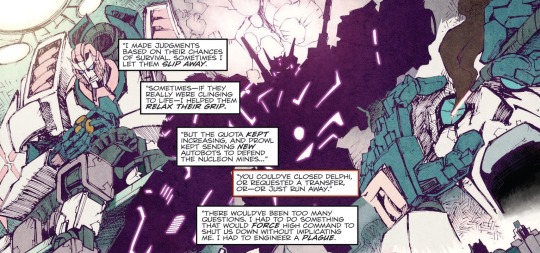
Soon, Pharma was so consumed with fretting over whether he’d be able to meet Tarn’s next demand that he didn’t have time or freedom to do anything else except worry and feel guilty. His whole life revolved around Tarn’s addiction; he was no longer in control, and could no longer enjoy whatever it was about Delphi he’d previously enjoyed. Perhaps the facility itself enabled Pharma to research cures and perform scientific miracles of medicine.
Being at the mercy of Tarn—convinced the DJD would find him no matter what—would have been pure psychological torture on its own, but also knowing that any small chance he did have of getting help would end in him losing everything would have added to his suffering. Pharma became desperate to reclaim control over his life and began planning an escape.
Now, JRO has said that Pharma didn’t originally plan to use the rust plague on the DJD…but canon says otherwise:

Of course, Pharma could have been lying to make himself look better in Ratchet’s view, but based on everything he’d been through up to this point with Tarn, it’s more likely he was telling the truth and had tried to eliminate the source of his suffering first. After all, wiping out the DJD would have been the simpler, cleaner option.
When the Duobots refused to detonate the soundbomb near the DJD, Pharma’s objectives shifted. He had to get Delphi shut down in a way that would:
Convince the DJD the shutdown was legitimate.
Pharma knew chances of escaping the DJD at all were slim to none, but he was desperate. Getting Delphi shut down would cut off Tarn’s supply of T-cogs and allow Pharma to escape Tarn’s immediate control, but the shutdown had to be “legitimate” to prevent Tarn from retaliating and hunting him down later. Leaving Tarn even the slightest chance of regaining control was too risky, so Pharma had to make sure his plan was as airtight as possible.
Cover up the patient murders.
If the truth got out about Pharma killing patients, he’d lose his medical license and most likely be put away for life. Being cut off from the practice of medicine and his intellectually stimulating work as a doctor would mean losing more than a job and a reputation. It would mean losing everything in which he’d anchored his sense of identity and life’s meaning. His refusal to consider any other options wasn’t just about ego and preserving his image as an excellent doctor; it was about preserving any kind of meaningful future he saw for himself.
Pharma needed a plan that would fulfill all of the above. Turning the engineered virus on the medical facility was the most effective and efficient solution. Anything else would have made him suspicious in the view of either Autobot High Command or the DJD, and neither of those would have ended well for him.
Because of his goal to preserve his reputation and future in medicine, he couldn’t even risk revealing anything to First Aid or Ambulon, who would have seen to his ruin. They became nothing more than loose ends that had to be tied up, and based on the fact that Pharma only prepared one vial of the vaccine, his original plan involved him being the only survivor:
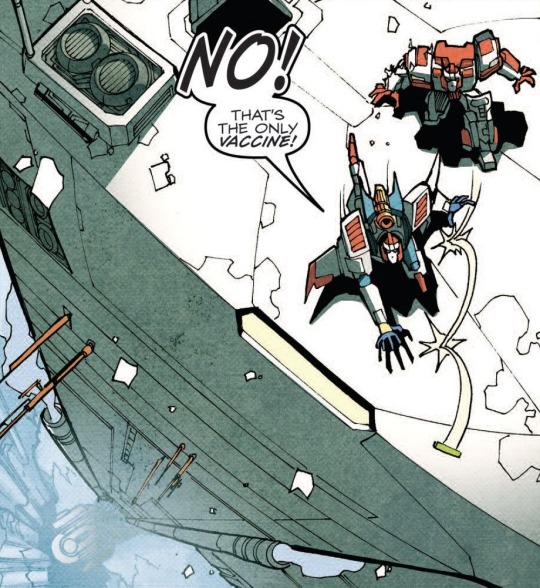
He probably would have had no problem making more of the vaccine for anyone else who survived, but he wasn’t counting on it. He wanted a totally clean slate; in letting his staff die with most of his patients, he would be getting rid of any and all evidence and reminders of his failures. He may have cared about First Aid and Ambulon before things got bad, but somewhere along the way, he decided either it wasn’t worth it to go through the trouble of finding a way to save them without raising suspicion, or he didn’t want to risk them putting together the pieces later on.
Of course, when Ratchet showed up, plans changed.
Ratchet
Ratchet is not the kind of person who seeks first to understand or be understanding. He’s inclined to trust what’s in front of him over anything abstract, and tends to look at the results of someone’s actions over trying to find any kind of ‘why’ behind them. Also, unlike Pharma, he operates from a strong moral sense, and reacts quickly and strongly when something or someone goes against that internal moral sense.
Ratchet’s reaction to finding out what Pharma did may seem hasty and harsh, but it makes perfect sense on a human level. There is no such thing as unconditional love; everyone has personal and moral lines (boundaries), and they’re different for each individual. When the most rigid of lines is crossed, that’s it; walls go up and the offender is cut off, no matter how strong the relationship may have been.
Ratchet obviously knew Pharma well enough to think he could try talking some sense into him, but then Pharma revealed that he’d crossed one of Ratchet’s lines: murdering patients. Any willingness Ratchet may have had to try to understand vanished. By the time Pharma started trying to provide a ‘why’ for his actions, Ratchet’s moral judgment had already shut down any chance of understanding what could have possibly led Pharma to kill patients. It didn’t help that Pharma seemed totally unapologetic and outright proud of his plan. For Ratchet, the ‘why’ didn’t matter anymore. What he saw was what he trusted, and what he saw was a friend who’d become his idea of a monster.
Now, Ratchet and Pharma’s relationship is one of the most confusing IDW relationships I’ve had the pleasure and pain of dissecting.
It is notoriously difficult to determine the depth and strength of a relationship from the outside. However, I’ve decided to go ahead and address it anyway because it has the potential to provide insight into Pharma as an individual.
If I were to sum up Pharma and Ratchet’s relationship in a single word, I would use “ambivalent.” The first time I read MTMTE, the thing that stood out to me most about their relationship was the drastic differences between how they each perceived the relationship.
In one sense, there’s the idea of Pharma basically being Ratchet’s crazy stalker ex, which is tossed around in fandom a lot. While I personally dislike seeing it regardless of context (yes, even as a joke), I do see how JRO’s writing choices set things up in a way that makes it easy to superimpose that trope.
In another sense, there’s the idea that Pharma and Ratchet were always close friends, and that what happened at the end of the Delphi story was a betrayal of both sides that came out of nowhere and whose consequences were taken too far.
I disagree with both. Personally, what I see at the end of the Delphi story isn’t an obsessed ex gone mad, a sudden betrayal, or a badly executed backstabbing. What I see is a breakdown of an already-complicated and poorly-maintained relationship: true feelings being revealed, long-repressed bitterness being forced to the surface, carefully-hidden cracks being split wide open.
Most people don’t have an accurate understanding of how much or how little they truly know the people in their lives, often overestimating how well they know a person until something surfaces and blindsides them.
According to JRO, Ratchet was oblivious to Pharma’s romantic interest, and throughout canon, it’s easy to see Pharma was more invested in the relationship than Ratchet ever was.
The question is, did Ratchet ever care about Pharma at all? And if so, to what degree?
Yes, Ratchet calls Pharma “buddy” and “friend,” but the former was sarcastic, and the latter means something different to each person. Also, in light of the circumstances, Ratchet could have just been saying “friend” in response to Pharma saying it—an emotional appeal more than anything.
However, Pharma must have been aware of Ratchet’s lack of relational investment because during the confrontation at Delphi, Pharma’s first reaction wasn’t to appeal to their friendship (ex: “But you know me!”). Instead, he appealed to their shared profession:
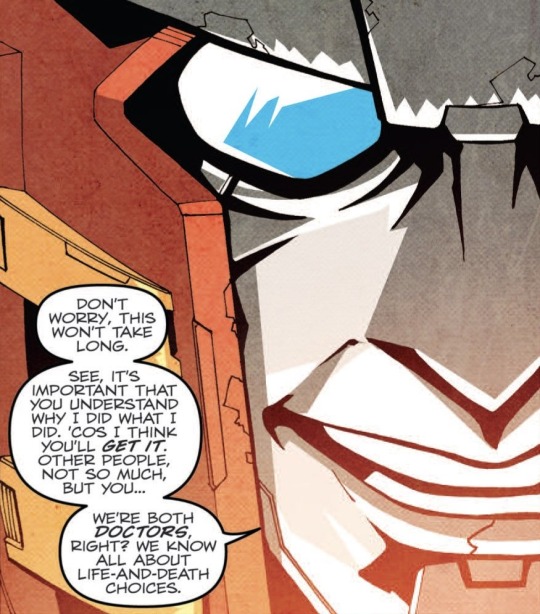
Then there’s the exchange of insults:
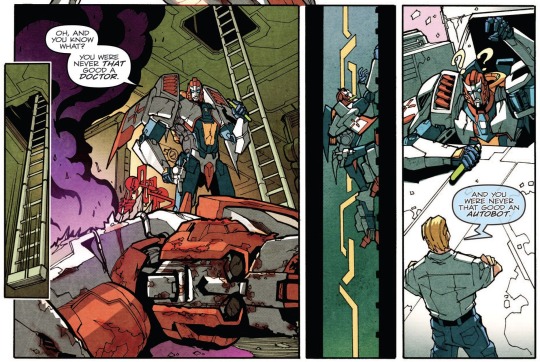
This is what I meant earlier by “true feelings being revealed.” Ratchet may have just been trying to match Pharma’s insult, but it’s unlikely it was merely reciprocal because while Ratchet is snarky at times, he’s sincere in that snark. There’s almost always some truth in his verbal jabs no matter how unserious they seem, and he’s never cruel for cruelty’s sake.
So, if Pharma saw Ratchet as an inferior doctor, and Ratchet saw Pharma as an inferior Autobot…it’s reasonable to assume there was always some deep-rooted competition and conflict preventing them from being super close.
Possible suspicion surrounding Pharma’s conduct as an Autobot paired with a tendency to misjudge the nuances of relationships could explain why Ratchet was so quick to decide Pharma was a lost cause. Maybe Pharma’s actions at Delphi confirmed something from the past that Ratchet had brushed off for whatever reason.
In any case, Ratchet seems to have been largely unaffected by the Pharma he found at Delphi. While leaving Messatine, he emphasizes that he’ll miss Pharma’s talent.

Not “who he used to be.”
Not “what we used to have.”
Just…“his talent.”
Later, on Luna 1, Pharma mentions that he and Ratchet were inseparable, but that could mean a few different things:
Best case scenario: Pharma and Ratchet sought each other out on equal terms.
Worst case scenario: Pharma followed Ratchet around.
Somewhere in the middle: the job forced Pharma and Ratchet to work in close proximity most of the time, and while Pharma intentionally ran into Ratchet more often than necessary, Ratchet also sought out Pharma every now and then.
Whatever the case, working with someone every day doesn’t tell you anything about who they are as a person, and the amount of time spent with someone doesn’t automatically correlate to how deep the relationship is or how well the people know each other. It’s not like either Pharma or Ratchet are shown to be good at expressing their personal feelings outside of extreme circumstances.
Ratchet does bring up late-night conversations of the past:

But while this indicates there was something deeper between him and Pharma, because neither of them were ever shown to be super open with their true feelings, it’s unlikely the conversations were full of touchy-feely talk. In all likelihood, the conversations were mostly medicine and war-related, with the rare spark-to-spark talk sprinkled in. Also, considering everything up to this point, one has to wonder if those talks ever meant anything to Ratchet, or if he was just digging for something that might stall Pharma’s torture.
Maybe those late-night conversations did mean something to Ratchet, but whatever the case, Pharma didn’t take the bait. He knew Ratchet was trying to stall by making an emotional appeal, and perhaps he was convinced the conversations hadn’t meant that much to Ratchet.
Looking at all of this, it’s hard to believe Ratchet ever cared about Pharma as more than an interesting work friend. But even if he had cared more than he let on, it wasn’t enough to overcome the doubts he had about Pharma’s character.
As for whether Pharma truly cared about Ratchet, I’m convinced he did, but in a mostly unhealthy way, and with a strong undercurrent of one-sided rivalry. At some point, Ratchet had been an equal and a source of challenge, and he probably listened to Pharma pretty often. It’s reasonable to assume Ratchet was one of the only people—if not the only person—able to handle Pharma’s intense temperament and challenge him in a meaningful way, providing some semblance of friendship for Pharma.
However, one last thing that stands out is that, when telling Ratchet why he’s torturing him, Pharma didn’t say anything like, “Because you hurt me” or “Because you turned against me—your friend.” Instead, he said it was for “ruining things at Delphi” and because “you declared war on my body.”
Either Pharma wasn’t being entirely honest, or Ratchet’s friendship didn’t mean as much in the first place as he’d previously implied. It’s possible the ‘Because you hurt me’ was implied in “for ruining things back at Delphi,” but why not say it outright? Perhaps it was a fear of vulnerability and admitting there was ever a relational need at all.
At the end of the day, it’s difficult to say for certain how close Pharma and Ratchet were, but it’s clear they were never on the same page and there were always barriers between them.
Luna 1
Revisiting the matter of Pharma’s morality taking a backseat to other priorities, his time on Luna 1 further underscores this. Again, Pharma chooses his battles and is unwilling to put himself at great risk for the sake of others, but a closer look at the situation with Tyrest reveals there wasn’t really anything he could have done for the Cold Construct population even if he had wanted to. It would have been him against Tyrest, an army of Legislators, and a bunch of Decepticons. Pharma knew his limits, and seeing as his goal was self-preservation, it was perfectly rational for him to go along with Tyrest’s grand scheme.
Besides, it doesn’t look like he was given much of a choice:

Although, knowing Pharma, he still would have demanded to know beforehand what he would get in return for the pain, and evidently, Tyrest held up his end of the deal since Pharma had access to the Luna 1 tech collection.
As for Tyrest’s plan to wipe out the Cold Construct population, there’s nothing indicating Pharma’s decision to turn a blind eye to it was rooted in malevolence or bigotry—just rational apathy: ‘I can’t stop Tyrest, so why concern myself with the outcome?’
Again, you can’t save everyone; Pharma had all he could do to save himself.
But it wasn’t all horrible. I would even go so far as to say Pharma found some happiness on Luna 1. Tyrest didn’t care about him, but he didn’t need Tyrest to care. Everyone else there hated him, but he didn’t need to feel like he belonged or was admired. At this point, Pharma’s only interest was Tyrest’s Luna 1 tech collection, and that meant playing nice so he could keep his reward. Back at Delphi, he probably assumed he’d never again practice medicine the way he’d loved; being brought to Luna 1 was an unexpected, yet welcome, second chance.
Even so, Pharma had his moments of cruelty. Back at Delphi, he had easily-identifiable reasons to kill patients—both the ones whose T-cogs he harvested and the 20 more he tried to kill when he shot the life support machine. But on Luna 1, he had no reason to be cruel, yet he chose to be. By this point, he’d mastered the ability to almost completely ignore or subdue his conscience.
In the case of Ratchet’s torment, one could argue Pharma only drew it out for retaliation purposes; it was personal for him.

As for cutting Ambulon in half, it was obviously meant to be as gruesome as possible, yet also quick. But personally, I don’t think it was about Ambulon; it was more about hurting Ratchet. Due to the fact that Ratchet’s identity is wrapped up in his compassion and his ability to be helpful as a doctor, one of the most effective acts of revenge would be to do something that makes him feel utterly helpless.
Also I wonder if, subconsciously or consciously, Pharma was attempting to recreate the sense of helplessness he felt back at Delphi under Tarn’s watch: “Do you see, Ratchet? Do you now understand how it feels to have control ripped out of your hands? To be totally helpless?”
Next, for some reason, Pharma was invested in the promised execution of Getaway and Skids:

He had no personal connection to either of them that would give him a reason to be interested, so maybe Tyrest told him he could perform the execution and/or have the corpses for medical experimentation. Either way, Pharma would have had a chance to use some of the tech in Tyrest’s tech collection, possibly explaining his excitement.
Of course, any chance of an execution disappeared when the final showdown went wrong.
When Pharma tried to escape to Cyberutopia and discovered he couldn’t pass through the spacebridge forcefield, he gave up. He’d been caught; he would no longer have access to Tyrest’s tech collection; Ratchet and every other self-righteous Autobot would never forgive him; and the morality lock prevented him from escaping. By all appearances, he would never again be able to engage in that which gave him a sense of meaning. He had shrunken his world down to his obsessive interest in a specialized field and one significant, yet unrequited relationship. With both of these lost, his world collapsed.
Yes, guilt played a part in Pharma’s despondency, but because he seems to have been in denial of said guilt, it’s more likely his despair was primarily due to the fact that he saw no future for himself. He had nothing left to live for.
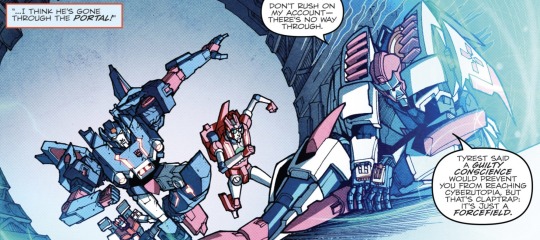
In light of this, Pharma’s flippant comments to First Aid make sense. He wasn’t being insensitive as much as he was goading First Aid. Pharma’s not stupid. First Aid had a massive rotary cannon on him, and Pharma knew exactly which emotional buttons to push to get him to pull the trigger.
Pharma wanted to die.

Adaptus
First, let me emphasize that Adaptus did not take possession of Pharma’s body. Instead, Pharma was the unwelcome guest:
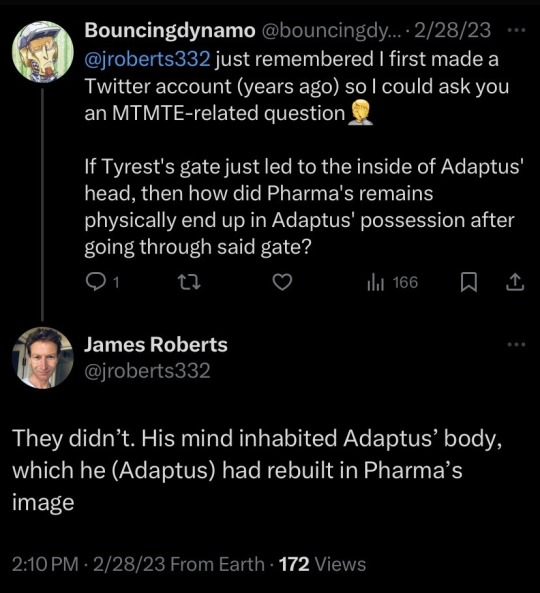
How Pharma ended up in Adaptus’ new body is a mystery, but whatever the case, Pharma didn’t pass on to the Allspark. Whether or not he had a choice can only be speculated.
First Aid had blasted Pharma’s head clean off, so whatever happened must have been related to the spark. Perhaps some residual spark energy was trapped in a body part that Adaptus repurposed, leaving Pharma tethered to the new body unwillingly.
Still, Pharma managed to assert his will and override Adaptus for a brief moment. Considering Adaptus was basically a god, this is impressive.
Based on Adaptus’ surprise at being interrupted, it seems he didn’t know Pharma was there. Why Pharma hadn’t tried to assert himself sooner is a mystery. Maybe Adaptus’ scheme was entertaining; maybe Pharma actually liked the company; or maybe he’d been waiting for an opportunity to get revenge on Tyrest for everything done to him back at Luna 1.
Sure enough, just like with Ratchet back on Luna 1, Pharma’s vengeful streak came out as soon as there was an opportunity.
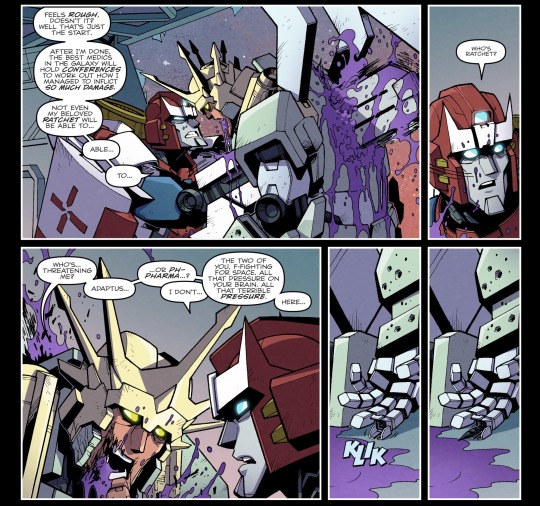
Unfortunately for him, this left him vulnerable, and Tyrest took advantage of the confusion:

Conclusion
When someone reduces their world to narrow personal interests and one or a few very special people, their grip tightens around what little they have. They often become obsessive and possessive of the few things that make them feel alive, and their view of the world becomes increasingly more subjective and detached from the outside world. Pharma seems to have fallen into this trap.
Even so, in the context of the circumstances, several of the decisions he made were rational—even if coldly so. Oftentimes, “extreme” rationality and self-preservation are villainized in fiction, and characters like Pharma who don’t automatically put themselves at great risk for anyone and everyone are villainized, or at least looked down on. Their choices are often regarded as less human, but rationality and self-preservation are just as human as compassion and self-sacrifice.
Ultimately, Pharma was trapped and pushed over the edge into “insanity” by Tarn’s cruelty, but his own choices made from a place of pride determined how he fell, and how far he fell. It was a perfect storm of Tarn’s mind games and Pharma’s intellectual arrogance, excessive self-confidence, obsessive nature, and stubborn grip on the kind of future he wanted for himself.
Pharma is yet another Icarus who flew too close to the sun and paid dearly for it, and while JRO/the narrative could have given this Icarus better wings, that doesn’t change the fact that he chose to fly so high.
***
Many thanks to anyone who made it to the end of this monster of a post.
-tosses a Rodimus Star at you-
#look who finally finished this thing#idw transformers#idw1#maccadam#MTMTE#lost light#idw pharma#pharma#tf idw character analysis#tf idw meta#dr. fancy hands#nova’s nerding out again
338 notes
·
View notes
Text

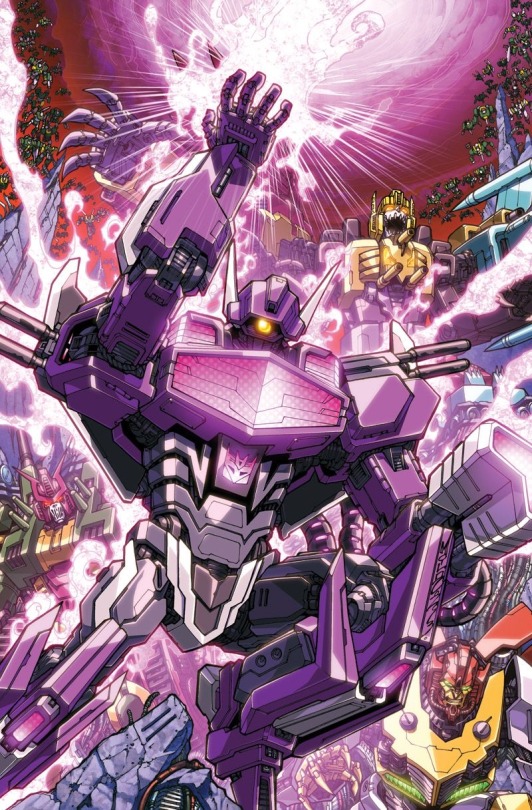

why shockwave is the most fatherly decepticon (even more so than soundwave):
(aka i’m delusional and smitten)
every character in every medium revolves around a theme. a theme in a novel or a show or a film tends to be an idea that will be explored in both the subtext and text of that medium.
shockwave’s theme, surprise, surprise, is creation and rebirth (in most tf media). his whole character is concerned with the parenting of either himself (as a way of rehabilitating after empurata) or of others (predacons, his little bots in cyberverse, or even his subordinates like tarn)
now, you might ask, what sets shockwave��s fatherliness apart from soundwave’s? how is he any more fatherly than soundwave?
allow me to demonstrate with the following screenshot from guardians of the galaxy:

yup.
shockwave was everyone’s father, but soundwave was everyone’s daddy (no not like that)
still not convinced? allow me to introduce you or remind you of the concept of nature vs. nurture. ironically enough, for someone who is only a father, shockwave is the more nurturing one. soundwave is considered a father because he is a cassette player and his “children” are cassettes
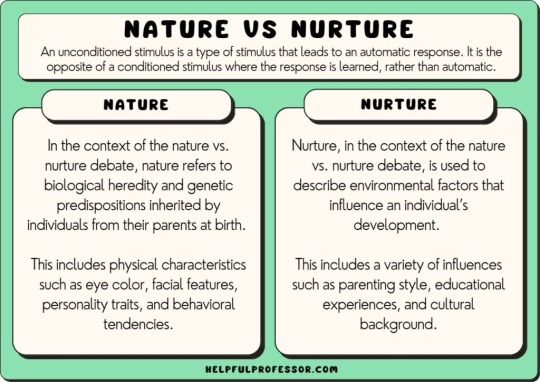
in idw1 soundwave was actually more so adopted by his cassettes rather than the other way around. shockwave, on the other hand, birthed - even if not literally - and raised all the subjects he needed to raise to prepare for either war or for life
in idw1, shockwave was like a father to tarn. post-empurata, he still chose to call tarn the name that defined him the most: “damus.” not “glitch”, not “tarn”, which are all personas and not real identities (glitch = associated with his outlier power, tarn = leader of djd) but “damus.” shockwave knows the real tarn because he was there to raise him.
(extra note: to really drill in the fact that shockwave was fatherly to tarn, shockwave thinks “damus” is tarn’s real name while megatron, right before killing him, implies that “glitch” is. megatron is a military leader; he will favor the identity that holds the most militant potential. shockwave cared for tarn; he will favor the boy he knew when he was still in the academy)
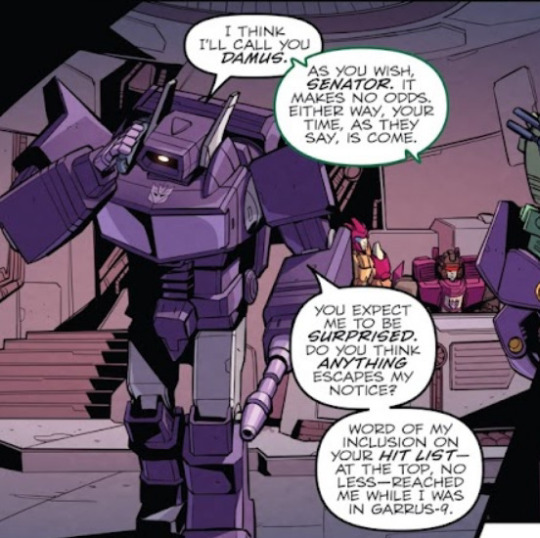
we can even still see the effects of pre-empurata shockwave on tarn, who takes great pleasure in the arts and everything conceptually and fundamentally beautiful like poetry or literature or music. and guess who wanted to be remembered for “both his brains and his beauty”?

in cyberverse, he was actually kinda like a father to shadowstriker. he took her in after she was severely injured and placed her in his unit as a form as rehab, if you will (she wouldn’t have been able to go to more militant and armed units in such a condition). though he was less there to nurture shadowstriker, as she was already a developed adult, he was there to protect her. iirc, in a scene where they get frozen by this immobilizer, shockwave pushes her behind him.
it’s the same in tfp, where shockwave, near the end of the series, shoves ratchet behind him during the spacebridge battle and fires at other autobots. the enemy is LITERALLY next to him and yet he chooses to protect ratchet from stray bullets. and to address the predacon elephant in the room, he literally raised predacons. he petted them and comforted them and gave them sustenance to live and thrive.

shockwave is cold, rational, and is obsessed with logic, yes, but he assumes this logic from what he has observed and what he has experienced before, whether that before be pre-empurata or before the war.
could he have had a fatherly and caring figure before the war? possibly. could he have picked it up from how animals assume this role automatically, as if it was biologically and universally a logical thing to do? possibly. but have we ever considered that… it’s just part of his personality?
BuT but shoCkwAve dOesnT have EmoTions
if he didn’t have emotions and therefore no personality, he’d never feel compelled to lie or have any will to do anything. he is driven. a computer is not. a computer is told to do something and will output the most logical output based on its coding. he’s self-driven and autonomous with his decisions.
so, to sum it up, shockwave is nurturing, but because he is often overruled by the need to follow a strict diet of reason and self-motivated curiosity for knowledge, this part of him is always overshadowed. he’s not a good man. he will frankly never be. but he can be a good father if he only let himself be. thank you for coming to my ted talk
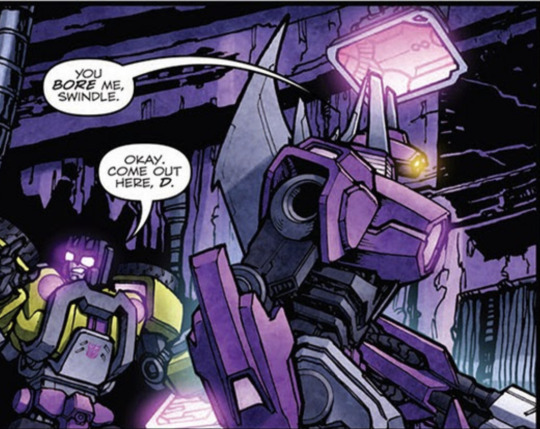
#transformers#transformers idw#maccadam#mtmte#shockwave#senator shockwave#tf idw1#tfp#transformers prime#cyberverse#tf cyberverse#character analysis#i wrote this without glasses#i love him so much#please don’t come for my ass if it’s ooc
180 notes
·
View notes
Text
TF-fandom is unfair about original Star Saber and here's why.
The post of cosmic injustice addressed to Star Saber and what was done to him.
Quite often there is an opinion among fans, at least in the Western fandom, that Star Saber is either the most boring of all the Autobot leaders, or a copy of Optimus from the first cartoon (for some reason, Optimus is not considered boring).
And I categorically do not understand the reasons. It feels like no one has watched the original animated series, but has formed their opinion from someone else's opinion.
Firstly, I can't say that Optimus was originally some kind of particularly three-dimensional character, but we need to understand at what time those cartoons for children were made, and even more so representing advertising toys – thank you that someone has at least some distinctive character traits (Super-God Masterforce is an amazing exception where the characters had characteristics and development). But at the same time, people try to do character analysis even on such meager material, while Star Saber is called a cardboard and that's it.
Secondly, where is Star Saber copying Optimus? Yes, he is already an established leader here, this is not the formation of a character like Ginrai, but even so his control of Autobots is shown differently. There are 3 main differences:
1. In my impression, Optimus and Star Saber share a type of command and control known as "father to soldiers" (of course, a cartoon light version of it), that's just shown from a western and eastern point of view. Optimus is shown as a softer (not in a bad way) and companionable leader, forgiving mistakes and disobedience of his soldiers, allowing himself to have fun with them, but when necessary, he is strong-willed and serious. Star Saber represents his father's indisputable authority, he still cares about his soldiers, forgives them combat failures and is ready to protect them to the last, receiving in return universal respect, love and willingness to help at any moment.
2. Of course, Optimus is often called the main father because of how he protected Spike and hugged Bumblebee, but Star Saber is still the canonical foster father for Jan, and this is a different level of responsibility.
3. Star Saber was going to kill Goryu or even the entire Dinoforce squad, which, for certain reasons, did not happen, but more on that below, and still killed Deathsaurus. Yes, it's all about the difference in ratings in America and Japan, but the fact is the fact.
It seems that there are enough differences not to consider Star Saber a copy of Optimus.
But it's one thing when this is the opinion of fans, another when the people responsible for canonical works hated and spoiled a good character. Yes, it's about IDW.
Of course, it is in principle noticeable that the authors of these comics love Decepticons more and dislike Autobots, but with Star Saber there was a case devoid of any logic and meaning. Only the name and appearance remained of the character's past, everything else was not even perverted or elevated to the absolute, but completely remade, leaving nothing of the character of the original.
And yes, transformers very often represent only a shell with a name, which can change the appearance and character from toy to toy or from cartoon to cartoon. But some characters most often retain at least a couple of features inherited from the original. And here no one tried. Moreover, the reason why Star Saber from IDW could not be an original character is unclear – there was neither a cartoon nor a toy that needed to be advertised and inserted into the comic, as happened with some characters, it was clearly a conscious decision of the authors to make it so.
Someone may say: "But Star Saber is cardboard, of course, they had to invent everything from scratch!". It was explained from above why this is not the case. Star Saber had good starting points for character development. With your permission, I'll offer a couple:
1. Taking custody of a human child. Don't want to include a human? Indeed, these are transformers comics, hatred of human characters is the first point for hiring authors. We are developing it. Could this indicate his heightened sense of responsibility? In the original, he did not have time to save Jan's parents, maybe he decided to replace his parents for this reason? Overcompensation of failure, the desire to fix everything at any cost.
2. Star Saber did not finish off Goryu, seeing how the rest of Dinoforce protect him. What can be extracted from this? Respect for the enemy? Some concept of honor – is it more honest to kill in battle than to finish off a recumbent? Did he not finish them off just because he saw in their behavior a reflection of his team, ready to do anything for their commander?
3. Universal respect. Maybe his squad is so loyal to him that among the entire Autobot command, he is the only authority for them? And that in the name of their leader they are capable of any actions, including not particularly good ones? This could lead to a conflict within Star Saber over both controlled and uncontrolled soldiers.
To come up with these not the most brilliant ideas, I needed to watch the cartoon with my eyes, and not in another place, and maybe think for 10-15 minutes. The one who prescribed him for the comic book either didn't think for even a minute, or hated this character for some reason.
Most of all, it is unclear where the religiosity came from. At the time of the release of the series, there was no Primus in principle, it was not invented yet in Japanese continuity. Is the author hooked on the fact that he sent Jan to study at a monastery school? Maybe because it was closest to some base? Maybe an alien robot is not so familiar with the culture and sent his son to this school because it's still a school? What did the author from IDW think at all, if he thought in principle? Was the desire to shock the audience beyond common sense?
The most annoying thing is that it's okay if in one work they change the characteristics of a popular character that appears often and represents the same thing. But Star Saber is not one of those! He is from an old cartoon, the same old manga and some materials in Japanese that no one translates. Why do this to his possible fans who would like to see their favorite character, who rarely appears anywhere? I have no answers, only an additional minus to IDW and what they have done.
In conclusion, I can't say anything good. IDW and everything they wrote has gained such incredible popularity in the fandom that future works will surely look back at their work to reproduce the success. As for me, undeservedly. And, unfortunately, this may mean that in the future, if we see a Star Saber, he will be inspired by a late image, and the early one will remain of little use to anyone.
I would like to believe the opposite, but it's hard to believe.

#transformers#maccadam#Star Saber#tf Star Saber#transformers Star Saber#Transformers: Victory#Transformers Victory#Victory Star Saber#IDW Star Saber#one of a thousand reasons why IDW sucks#Star Saber is the true father among Transformers
52 notes
·
View notes
Note
Hi! Firstly I must say that I found this account thanks to one of the Pharma content you shared and I must say I am very glad I found it. It helped me see a lot of things in the canon universe that I hadn't realized before, and to understand the personalities of some of the characters. And I wonder... What do you think about how fandom portrays some characters like Tarn, Getaway , Pharma and etc? Most of the fanfics I saw took these kind of characters a bit OOC. Is this because we don't have much of canon information about the characters or is it some kind of misinformation ?
Thank you, I'm glad you enjoyed the Pharmaposting and stayed to look at some other TF IDW content!
Honestly, I've only really read fic with Pharma in it that I would consider OOC (and I don't feel confident enough in my analysis of Tarn to say what's IC for him or not), but I do have a suspicion that them and other characters being written OOC is indeed more about misinformation, or more accurately, fandom bias.
TLDR: People forget that "protagonist" doesn't mean good guy and "antagonist" doesn't mean evil guy, so fandom tends to give their favorites a lot of whitewashing and justifications for their shitty traits, while piling the antagonists with every flaw possible to show how EVIL they are. Also, fandom is just full of petty bias where popular characters will be treated with favoritism and good faith, but unpopular characters will be interpreted in the worst possible light even if it's OOC or contradicts canon.
A lot of people tend to fall prey to a sort of mindset called "protagonist centered morality" where basically, the protagonists always have to be good people (because many people assume that protagonist/POV character = the guys that are supposed to be Good and Right) and anything they do is right, even if it's not, because they're the protagonists. And the designated antagonists/villains are always evil in every way because they're against the Protagonists who are Good and anyone who's against the Good Guys must be Bad. And PCM is understandable to a degree, because it's only natural that since readers spend more time with the protagonists of the story, they are far more sympathetic to those characters and thus tend to give them more charitable interpretations or excuses for their actions.
If I had to hazard a guess, I would say that Pharma, Tarn, and Getaway (just as the specific examples you mentioned) get written as OOC because they stand as antagonists to the protagonists of MTMTE (to Ratchet, Megatron, and Rodimus respectively), and people like the protagonists more than the antagonists. So that means in fics, the antagonists are more likely to be written as one dimensional or villainous in OOC ways basically because of the inherent bias towards protagonists and the assumption that protagonist = good guy
For example, one frequent OOC take I've seen of Pharma is people writing him as if he's a Functionist. This is partially based on misinformation, because I think many fans just saw Pharma working with Tyrest to eradicate cold-constructed mechs and instantly jumped to "Pharma works with Tyrest and Tyrest is a bigot, therefore Pharma is also a bigot" while completely ignoring the actual contextual reasons behind Pharma being there at all (aka, Pharma was there because Tyrest found him and he would've died otherwise, also Tyrest is pretty clearly exploiting Pharma based on the ways he treats and talks to him). And they just jump to writing Pharma as a vain, Functionist prick because hey he's a Bad Guy and Bad Guy = Bigoted right???
Except that doesn't actually hold up to canon, since as we know RATCHET is the medic who spends by far the most amount of screentime talking about how forged medic hands are superior to cold constructed or any other form of hands out there, literally saying that he'll be "worthless" once his hands start working.
But the problem is that for the average Fandom Person with an incredibly black-and-white worldview, the concept of Ratchet, one of the good guys, one of the most famous of the good guys even, being a Functionist? That makes them really uncomfortable, because Functionism is bigotry and everyone who has bigoted beliefs has to be an asshole who's evil and does bad things, right? And protagonists are Good Guys who can't be Evil and Bigoted and Do Bad Things.
So then, people either selectively pick out or completely ignore canon and write Pharma as the Functionist and Ratchet as the pure, open-minded good guy. Because people assume by default that protagonist/POV characters = good and the antagonists = bad, and in order to show that the good guys are Good they have to be perfectly ideologically pure, and every antagonist has to be Horrible and Bigoted. I think this is especially bad in fandom because I've seen a lot of cases where villains are written as evil in every possible way with no redeeming qualities whatsoever. Like, in canon a villain might just murder some people and laugh about it, but in fanon people write the villain not just as a sadistic murderer but as someone who's also racist, sexist, ableist, etc etc. Writers who are really inexperienced tend to rely on bigotry as a crutch to make sure the Designated Villain is seen as villainous beyond a shadow of a doubt in a way that's really eye-roll inducing because it's like, you can tell that the writers can't comprehend the idea of villains being interesting, compelling, or correct about anything, so they compensate by making the Villain Character absolutely repugnant and bigoted in every way so that it's abundantly clear that You Are Not Supposed To Sympathize With This Character Or Question The Morality of Their Perspectives You're Supposed To Just See Them As Pure Evil For My Morally Righteous Protagonists to Defeat.
So, while I can't really speak towards ways Tarn or Getaway are written as OOC in fandom, I have been in enough fandoms in general to know that fandoms are full of petty, stupid takes where fans are blindingly biased towards their favorites, to the point where they can't separate their emotional attachments to characters from reality. And they end up writing certain characters as OOC over the top villains in their fan fiction because they can't comprehend any other reason why ANYONE IN THEIR RIGHT MIND would try to harm or get in the way of the precious, good, sweet protagonists who are right about everything and if they've ever done anything wrong then it was morally justified actually and they're totally different from these antagonists who did comparably bad things.
So to bring it back to Transformers: Fandom can't acknowledge Ratchet as a Functionist because that would mean that he's problematic and evil, so we have to make Pharma the Functionist because he's already evil so make him a bigot too. Also, if Pharma hates Ratchet and tortures him, it's just because Pharma is evil. What do you mean Ratchet stole Pharma's severed hands after leaving him for dead on a frozen planet? Pharma is evil, sweetie, that means that he got what he deserved and he has no rights to be angry about his body parts being harvested/used by someone else without his consent. Also, clearly the only reason Pharma wants his hands back is because he's an evil Functionist who thinks being forged makes him superior. Huh? What's bodily autonomy? No, Pharma is just evil and there's nothing understandable about his motivations at all. Being angry at your ex best friend for abandoning you, leaving you for dead, and then stealing your hands to use as his own is a JUSTIFIABLE reason for Pharma to be an antagonist to Ratchet, and Pharma isn't allowed to be justified in anything because he's evil! Evil people can't be right about anything because that would mean that evil people have feelings and sometimes the designated good guys might not actually be 100% good like I project on them in my head!
(I'm exaggerating for comedic purposes, but I hope you understand what I mean.)
Also, another thing about petty fandoms is that shipping is a big reason why characters get written as OOC in fan fiction. To put it simply, certain ships are very popular, and some characters outside of that ship are seen as "competition" for the OTP. Thus the "competition" is villainized so that it becomes abundantly clear that the characters of the OTP were totally meant to be together. For example, Pharma being written as the creepy stalker ex to Ratchet/Drift.
It's not even just a shipping thing either, you see it with popular characters being super coddled by the fanbase, and any characters who hate them in the story get written in fanfic as being the worst most abusive people ever. Fans of character A care so much about A being happy that they view any character being an antagonist to A as evil and standing in the way of A's happiness-- even if the antagonist is completely justified in their antagonism towards A.
If Tarn is written as OOC in your experience, I would hazard a guess that it's because Megatron is insanely popular among MTMTE fans and Tarn is an antagonist who threatens Megatron's happiness. Therefore Tarn has to be written as 100% evil and Megatron is blameless for everything Tarn did/became, because acknowledging that Megatron fucked Tarn up and then completely forgot he existed right until the moment Tarn threatened Megatron's good time would mean acknowledging that Megatron is kind of an asshole who maybe had karmic retribution coming to him.
I assume something similar would happen with OOC Getaway, but with Rodimus instead. Rodimus is very popular = Rodimus is our sweet boy who deserves the best = ew I can't believe Getaway mutinied against Rodimus, anyone who hates Rodimus is just an evil asshole = I will write Getaway in my fan fiction as being literally the worst guy in existence and being evil just to be evil = Getaway has no justifications for being evil because only someone who's 10000000% evil would ever do those things he did and steal what belongs to Rodimus.
Sorry for the really long response, and I am aware this is quite a cynical take on OOC writing in fandom. I am just very cynical because of the amount of stupid takes I've seen in fandom that are more based on people's biases and favorite/unfavorite characters rather than anything factually based in canon, and it's a pretty widespread problem in general that fandom tends to mischaracterize characters or ignore lore whenever it suits them. And again, I've only really seen OOC Pharma so when it comes to Tarn and Getaway, I can only make educated guesses based on what I've seen of canon and brief glimpses of fandom discourse.
#squiggle answers#this is really long sorry lol i kind of exhaustively explained my thought process when i didnt have to
13 notes
·
View notes
Note
☕️ the Optimus Prime ongoing?
look, i get why a lot of the fandom, even the part of the fandom that likes exRiD, often bounces off the OP ongoing to one extent or another. it's a book with a lot of caveats required when recommending it; both in that it has some pretty significant flaws narratively, and that what it's even trying to do in a lot of cases is simply not what a lot of people want out of their TF comics. but i really really like the OP ongoing. at its best it has some of the most interesting and subversive approaches to iconic parts of TF, especially Optimus himself, that we've seen in any major continuity; it pulls together Barber's concept for IDW Optimus more completely than anything else, and as someone who really respects what he went for with that character personally, that alone means I get a lot out of it.
its big flaws are pretty easy to nail down, tbh. it exists during the mandated hasbroverse stuff that forces a lot of chaff into the world and ongoing narrative of IDW1, and it's forced to bear the brunt of it among the three ongoings. it comes at a point where Barber is being stretched REAL thin by his writing and editorial responsibilities, and there is a very real dip in how tight the storytelling is that i have always assumed was in part related to what must have been just an overwhelming amount of work Barber had to do each and every month on these comics by that point. (the devil works hard. Barber, when running TF comics, worked harder.) at times, Barber gets extraordinarily excessive regarding his tendency for extremely deep cut referential lore-heavy stuff, which if nothing else makes the fact OP was supposed to be a new-reader-friendly soft relaunch HILARIOUS. and content wise, there are some swings and misses in there for sure.
but still. i do like it. i think it does such a good job at making Optimus a central character, as distinct from necessarily a protagonist, and showing through all these other characters around him the weight he exerts on his narrative and his world. it's a story interested in the consequences of a character like Optimus being able to exist, someone who is mythic walking around still alive and interacting with those around him, and the near impossibility of leveraging anything like that for actual good because it will always bite you in the ass.
and it has so many compelling characters! arcee gets her due here, following on from exRiD. some of the best soundwave content in the comics is found here, and i love barber's soundwave. aileron, jazz (GUYS, JAZZ IS IN THIS ONE, WILL THAT MAKE U READ IT), a resolution for sideswipe... and yeah, the series understandably has a reputation for being Barber at his most overly convoluted and plot-heavy and fanwanky, but it also has some truly compelling emotional threads because dammit Barber IS good at writing emotional arcs, and he deserves to be known for it too. the issue where Arcee says goodbye to a dying Sideswipe makes me cry. the Arcee/Aileron throughline is wonderful and a hugely important part of her arc. the stuff he does with Soundwave thematically slaaaaps.
...this is really long so i'll finish with a couple final points. one, i think basically any analysis of Prowl's character in IDW that skips OP entirely is just inherently incomplete. one day, i want to write about what Barber does with Prowl in the flashbacks re: looking back on and recontextualizing some elements of the character. and two, this run has two of my favourite single issues in the entirety of IDW; the annual, Starscream: The Movie, and #25. so yeah. it's flawed and not for everyone, but i think people should really give it a chance.
21 notes
·
View notes
Text
Tag 9 People You Want to Get to Know Better
Thank you for tagging me, @novafire-is-thinking!
To all the people I will be tagging, I apologize. Again, this is just for fun and no one should feel obligated to participate if they don't want to. I'm tagging more people than I am mutuals with anyway.
Currently Reading: the functional analysis script issued by our professor, I can't even remember what the last physical book I read was, lmao. I've been into fanfiction for many years now and thus I'll mention The Big Conversation by Enfilade on Ao3 instead. It's a nice comedy about the DJD and other Decepticons chatting on an online forum.
Favorite Color: Blue :-) and its neighbors on the color wheel (green, purple).
Last Song: Edge Of Night (Peyton Parrish Cover). It's calm and less energetic than his other songs, but the emotion in his voice is so raw and it's beautiful. I love his covers and originals so much, I listen to them on a daily basis and for many hours straight. His latest album Rise of Vikingr has been playing on loop during bus rides since November. Viking Metal ftw!
Last Movie: I rarely ever watch movies, only when I visit my mother and we saw the first half of Gemini Man two days ago. It's okay and some of the action scenes were good.
Currently Working On: Passing the upcoming exams. I don't have time to draw or write as much as I used to, easy sketches and small drabbles are fine, but once the exam phase is over, I'll work on drawings and fanfictions again.
Sweet/Spicy/Savory: Sweet-savory-spicy; I can't stand spicy food.
- Bonus -
A TF Character + Beast Mode Combo You Think Would Be Awesome: Rossum (IDW) + Common Octopus. The Rossum brainrot has consumed me and I am suffering. Giving him an octopus alt mode would be funny and octopuses are highly intelligent creatures which fits. ...on the other hand, turning him into a possum would make a great pun.
Passing this to: @cyber-streak-2, @ryuki-blogs, @macabre-beth, @pilotjaxs276, @acatpiestuff, @beetle3000-1, @heckinsnekalert, @softballmaster21
(If you're uncomfortable with me tagging you all the time, please tell me.)
5 notes
·
View notes
Text
so. about ‘true form starscream’
I know a lot of people really don’t like it, and I do see why. I'm not exactly MScott's #1 fan, and the trans/race metaphor blender thing might be weird for someone, if they're unable to buy into the whole "speculative fiction" thing. despite this, I can't help but find Your First Mistake to be kind of compelling and I'd like to explore why and my thoughts on the matter under the cut.
most of the criticism levied at this and subsequent issues is that seeing what he would look like if he was forged pushed starscream farther into ethical behavior—and doesn’t that prove that anti cold constructed sentiment is right and at least somewhat based in truth? eh, I don’t think so. because even if that frame is what his spark would have made if it could shape a protoform itself, although I’m not convinced it is, it’s still not what he would look like if he was forged.
if you pulled a reverse Megatron on Starscream, if you plucked his spark out of a factory and planted it in a hotspot, that’s still not a ‘natural’ spark. he would still have been affected by the killswitch. do you know what changes? he doesn’t have dysphoria. he isn’t discriminated against, because people wouldn’t know. that’s it. that’s not a body that’s shaped by 'Primus' (unless you count the spark coming from the Matrix.) it’s just him. there is no ‘forged Starscream’, unless Cybertron in some offshoot timeline managed to muster up an identical spark.
and why do people assume that’s what he would have looked like in that scenario, anyways? the ‘true form’ is a body reflecting Starscream’s spark after countless years of war, after knowing so many different people—never touched by 'Primus', but apparently touched by Wheeljack, Bumblebee, Skyfire, Soundwave, Ravage. (metaphorically. probably.) it’s probably at least a little different than the above scenario, where his spark was only touched, truly touched, by himself and the matrix. it’s in the image of who he is now. don’t you think, in a species with mods and frame changes, that even forged bots who mostly like their bodies might change some things along the way? that during their long, long lives, their sparks, their very selves, are touched so deeply that they might want to alter parts to make themselves more at home? I think they probably do.
Windblade isn’t making anything by adding, she’s making something new by subtracting. she says, “is that what you were truly seeking, Starscream? escape from a foreign skin? the belonging you thought was lost forever?
“did you forget it was here all along?”
see, like I said, Windblade isn’t somehow channeling the power of Primus to transform Starscream into what he would be like if made by him. she’s just helping him molt.
so, why is it that he’s able to ‘molt’ whatever’s been holding him down? why is he able to realize the body that’s apparently been touched by all these people only now? he designed his recent frames, right? Windblade said he always had this belonging, buried. what buried it? why couldn’t he visualize the right one?
I think it’s because the ‘slag’ that fell away is the lie, the really big lie, that Starscream had been telling himself for a long time—his isolation. apparently his previous attempts at interpersonal connection had been cut off by Megatron, who literally ‘beat it into him’ that he had nobody, or maybe he felt like he couldn’t trust anybody because nobody stood up for him when he was being mistreated, and even if objectively that’s reasonable (I mean god look at Megatron) it still had to sting. either way, no matter how it felt or feels, Starscream has never really been alone. you’d think that Megatron would be among the ghosts, right? literally Elita One is there. Optimus Prime. Shockwave. it’s ‘every ally’ but also ‘every enemy’. except Starscream never doubted that Megtaron affected him, did he? what allowed Starscream to take his truest form when he never could before was Windblade showing him that he’d been touched by so many others, loved and hated both. Starscream had been viewing himself through the lens of a single relationship, and an awful one at that, that he backed his own self image into a dark, miserable corner. when Windblade took away this lie, he could visualize himself in a way that accurately reflected his spark, changed by so many other people as it was.
Starscream becomes a better person because a) he was already heading that way and b) he was, with help, finally able to pull himself out of an awful, stifling self image narrative intentionally or unintentionally instilled by a violent abuser. I think it's just part of his path to healing. I think it's sweet.
it’s not what he would have looked like if he were forged. it’s so much more than that, to me. and I’m, well, kind of enamored with that.
#transformers#analysis#character analysis#transformers analysis#starscream#idw#tf#i kind of liked this issue and i want to talk about why
60 notes
·
View notes
Note
Can I see the deeper TFA analysis pretty please? 🙂 I personally like TFA for it's uniqueness, but I can understand why people don't like it, with how many changes there are to the lore and characters...
Oh sure! I apologise in advance if any of this sounds too direct or rude maybe? I don’t know, I just don’t want people to think I’m being that on purpose.
First off, my experience was coming after reading some of the IDW comics and watching TFP, who have a way more mature take on TF as a concept on a general basis, which is not good/bad per se, it’s just a different take. With this said, I think TFA is really bound to its time period: the characters are so intrinsically linked to the kind of ‘lol loud and random’ mood that was very popular in the late 00s I have never enjoyed as a child, and I surely don’t enjoy it now. It pushes the American type of comedy a lot (for obvious reasons, please don’t think I don’t take into consideration this is an American media for an American audience) that doesn’t make me laugh/I don’t find it funny (this is not isolated to TFA, I just find american comedies very hard to laugh to. Ex. I’m sorry I don’t like the office :( ).
The characters themselves range from bland to very annoying to This Is My Enemy. My Enemy is Bumblebee. I cannot stand him. Another one I couldn’t bear when he was on screen was Starscream, he was absolutely useless and I cheered so hard when Megatron killed him ahahaha Ratchet was another one I did not like at all; he was mean. Like, legit mean and not in a fun way. 🤷🏼♂️ Sure he had seen the war etc. but he was not written very well in my opinion, as an old-men-with-ptsd connoisseur tm
I also have a huge problem with Prowl and how he’s designed/acts, it’s a bit like the same problem I have with IDW Drift but... at least IDW Drift is more interesting and leaves the Japanese aspect more to the vague aesthetic. Prowl was removed from his character completely and doesn’t seem to have much of a personality besides zen monk ripoff :( Just invent another character, then. Just, do it. He was born in the phase of ‘we love Japan, samurai kakkoii kiyaaa’ and I really did not like what they did with his character. It was kind of forced.
Why are there just two Constructicons and why are they Italo-american parodies
Why is Blitzwing like that, why does he have a stupid German accent
Sari was not a well written child, imo. TFP Miko, which is extremely flawed as a pre-teen/teen character (she is 14 afterall) gets on your nerves, but it makes sense! She also learns a lot during the course of the show! Sari is pretty much the same loud child, and the change in her is prompted because she just... magically grows up. At least she becomes more bearable. Weird she’s a transformer tho-- I mean, cool idea, weird execution.
Optimus was fine. He was fine. It is fine. He was fine. Optimus Prime was fine.
Megatron was cool but I have 0 recollection of what he was supposed to be besides smirk man sipping a glass of energon lmao I mean I guess???
Tfa megop had no chemistry and I don’t think I even like, had any prompt in the show to even think they could be interesting together.
The plot existed only in the third season, the first one was mostly useless and I had to skip most of them by pure boredom. I think the deterrent was mostly the villain-of-the-week + humans.
The worldbuilding might have been interesting, since they clearly throw in the fact that the autobots are not *good* per se, they live in a pretty authoritarian society and they wanted to keep the war frames secluded from civilian frames anyway; but even if you heavily hint this and never really address it full on, it’s just an interesting glimpse of what could have been. Also, autobots = hinted authoritarians, but decepticons? they bad!!!!!!!! they are. bad! ok? they are bad. autobots are authoritarians dicks, but the decepticons are just bad. they just are
Well, the designs to me are ugly. I can’t really describe it in any other way, completely subjective reaction here.
And that’s it probably!
19 notes
·
View notes
Text
Why Megatron’s Redemption Arc Falls Flat - Part 1
So the intention was to have this out before LL #22, which it kind of is?? Disregarding the leak, which I haven’t read yet - but since Megatron’s back in the picture again, I wanted to go over why I don’t feel his redemption arc works. This is going to be a 2-part post, with Part 1 here based on how Megs’ arc affects his character narrative, and Part 2 (which I’ll probably post within the week), will be about how Megs’ arc functions on a meta level, and how those meta-textual details are used to highlight and hide different parts of his story.
To start, a recap on what a redemption arc is: a character making up for past mistakes - a process of self-reflection and action taken to make amends for things they’ve done in the past.
One really good example of this in the TF comics so far is Drift. High ranking Decepticon general switches sides late in the war, joining the Black Ops equivalent of the Autobots, specifically so that he can go in and take on the worst aspects of his former faction. He uses religion to soothe his guilt and acknowledges that he’s made enemies of most everyone he’s likely to meet - the Decepticons for defecting, and the Autobots for being a Decepticon. He uses that to his advantage to protect his friend (Rodimus) from punishment, and uses his time in exile to try and right as many wrongs as possible in an attempt to balance his karmic scale. Is it a healthy approach? Not entirely. But is it a believable, emotionally strong character arc? Absolutely.
So we’ve seen a redemption arc done right. But then we get to Megatron’s. Leader of a war faction that committed genocide on billions of sentient beings under his orders denounces the faction under duress and gets put in a leadership position of a small band of generally Autobot aligned Cybertronians, becomes a pacifist and then is allowed to teach lessons on the ship. When he is confronted by the DJD angry about his abandonment of the movement he convinces his teammates to stay on the planet to defend organics and fight while he directs from the back. After deciding to abandon his vow of pacifism he kills the DJD and restores his Decepticon badge, is saved by his teammates, and reverts back to his Autobot allegiance. He and the team are then thrust into an alternate world where the Decepticon movement never began and Cybertron is under totalitarian rule, again commands a force from the back, before remaining behind in this universe to begin the Decepticon movement again, so they may rise up against their Functionist masters - but this time, he will do it ‘right’.
I mean, what? Did anybody else see the huge blip in his supposed redemption there?
Let me make my position clear. I don’t like this arc. I don’t like how Megatron’s personality turns on a dime, and we are expected to believe that this is because he has been redeemed. Because he hasn’t.
Megatron’s biggest concern is his reputation. He only changes his ways when he steps back and realises ‘shit, I’m the villain in this story’ - he didn’t win the war, which means he’s not the conquering hero, which means he doesn’t get to write the history books now. No, he’s staring down the barrel at a future of hatred and blame that he does not think he deserves. That’s what motivates him to twist the trial in his favour. That’s what motivates him to distance himself from the Decepticon narrative. That’s what motivates him to confront the DJD. And that’s what motivates him to try and reclaim that mantle in the Functionist universe. It’s all about his damn ego.
And he knows how to play the game. He’s a master manipulator, and sometimes his lies are blatant as he tries to play the good guy card. When he wakes up with Tailgate preparing to perform mnemosurgery, he says later to Cyclonus ‘I wouldn’t have hurt him. I hope you know that.’ Bull fucking shit. When Rung plans to disbar himself from practicing, he first tries to prevent Rung from handing in his resignation by claiming that Rung ‘deserves’ to continue in his role. When he’s met with resistance he tells Rung he should let his patients know, and that from there they can decide if they want to see him. Rung shoots this down pretty damn quick though - because Rung knows that he is the voice of experience in this situation, and that therefore it is his duty to do the right thing. This is in direct contradiction to what we’ve seen of Megatron. If Megatron had showed the same sense of responsibility, he would never have taken up the mantle of leadership again in the Functionist universe. He knows what happened last time. But he leaves his new people uninformed on the assumption that he can objectively monitor himself, he is setting them up for disaster.
Which brings us back to this: Megatron doesn’t care about the people he’s hurt, or about the lives or planets he’s ravaged. He only cares about his own story.
The unleashing of Megatron upon a Cybertron that doesn’t know what he’s been doing for the past four million years is treated within the narrative as something wonderful, a chance for a new beginning, but really? Megatron gets a chance to start his story again, from scratch, but all those people he killed? The lives he destroyed? They don’t matter to him, and they’re not supposed to matter to the audience either. Megatron gets a clean slate, and meanwhile, the rest of the cast goes back to cleaning up the messes he left behind.
Megatron doesn’t deserve a clean slate. He needs to confront the results of his past – something that the canon lets him get away without. At no point does Megatron speak to any cons who suffered for his war, they never visit places Megatron has pillaged for resources, and when people do try to hold him responsible, they are positioned as the bad guys. Megatron talks about how being on the LL is the happiest time of his life, and really that makes a lots of sense. He’s been elevated to a position of power, like he always wanted, he’s being respected as an academic, like he always wanted, and he is working with an isolated group of people who are all treated as equals, like he wanted. The big thing he conveniently forgets, however, is that he’s not responsible for any of this. All this success Megatron is receiving? That all comes from the Autobots. Could you imagine he would show as much mercy if he had won the war? But no, this is Megatron’s story. As long as he is happy, he does not need to bother himself with the mess he left behind.
Megatron’s redemption arc falls flat for me because this is not the Megatron that we’ve seen in the IDW verse for the last umpteen years. This is an entirely different creature, and significant work was done to make him as sympathetic as possible, and to make the audience forget who Megatron truly is.
For a meta-textual analysis of how that is done, stay tuned for Part 2 [which will be linked here when complete].
83 notes
·
View notes
Text
Thoughts On Pharma’s Design
A little while ago, I was chatting with a friend (hi Sparrow) about Pharma’s design, and she made an observation that made me realize something interesting. It might be a stretch, but it’s a really cool stretch.
Here’s Alex Milne’s original Pharma concept design next to the new/current one:


When I first saw these side-by-side, I immediately noticed how the new one looks so much better, but I couldn’t put my finger on the why right away. There are plenty of other TF jet designs that look similar to the old design, and they look good.
Why does Pharma in particular look better with the downward-pointing armor?
In my conversation with Sparrow, she said something like, “the sharper points of him point downward,” and then it hit me:
The Angel of Death
(Or Grim Reaper)
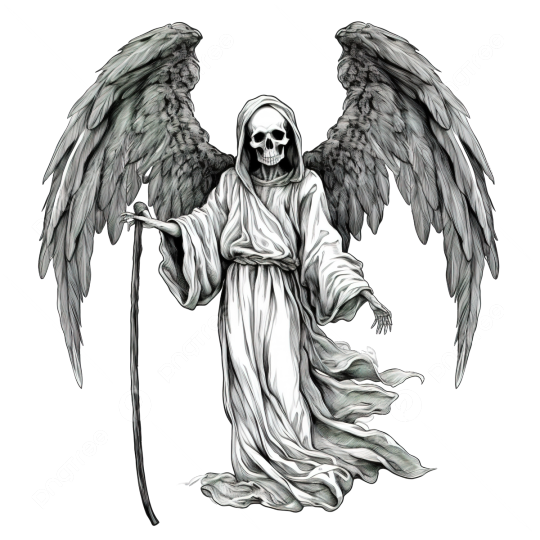
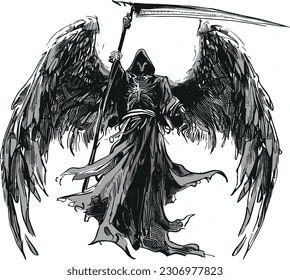

The way Pharma’s wings attach high on his shoulders and point downward so that they look like the Angel’s…the scythe-like shape of Pharma’s arms + wings…the way his eyes go wide during his murderous medic arc in a way that resembles the hollow sockets of the Reaper’s skull…


EVERYTHING.
It’s poetic to me how Pharma’s design aligns with the tragedy of his life: how a guy who was supposed to save lives and bring healing descended so far into madness that he became a twisted Angel of Death instead.
Someday, I want to ask Alex Milne if this was intentional, but even if it wasn’t, he’s a genius.
#idw transformers#maccadam#tf idw#idw1#tf idw analysis#tf idw character analysis#(it counts)#MTMTE#idw pharma#dr. fancy hands#nova’s nerding out again
372 notes
·
View notes
Text
TF Fanfic Census 2017 (pt. 4) : IDW Reader Response
Ever wonder what the ‘average’ reader response to fanfic in this fandom was? ...Well, that turns out to be hard to quantify, but I’ve got a lot of graphs and I’m gonna try.
Then we’ll look at the most popular IDW fics and see if they’ve got anything in common.

So, first off! If you have trouble reading the graphs, they’re also available in an image post here and here.
Now let’s look at IDW compared to some other Transformers shows. Shows that have aired on television recently have higher hits, which I’m taking to mean a larger readership. (The size of each bubble indicates the number of stories published) However, maybe readers reread those series more often.
IDW has a smaller median hits than any of the major sub-fandoms except Gen 1, but has the highest median kudos. Cool! That seems to indicate that IDW readers are really invested and active readers. (Or, possibly that all of the readers are also writers and they know how much their fellow writers appreciate kudos.)
I’m going to usually neglect comments and bookmarks for this analysis because they’re usually equal and somewhere between 2 and 5. Pretty boring.
Also, I should note that there are some things I can’t measure here. Presumably a lot of popular works are well written, by well-regarded writers, about characters or subjects people wanted to read about etc. I can only quantify data that is tagged and easily searchable.
Anyway, let’s look at Transformers compared to some other random fanfiction communities.

Yeah, I randomly picked a bunch of things I’ve read fanfic from + Harry Potter cause it’s big. Sue me.
Anyway, I’d say the interesting trend here is the lack of a trend. There’s no correlation between number of stories published and hits or kudos. There’s a general trend line: the more hits you get, the more readers are around to give kudos, which is what’s throwing the Marvel cinematic stuff up so high. IDW Transformers is a bit of an outlier for median kudos compared to median hits. 👍
Breaking It Down
Let’s get interesting - Does the rating of a fic (G, T, M, or E) impact its reader response? What about one-shots versus multichapter stories?

Looking at hits, we can see that readership is strongly stratified. If you want more hits, write multi-chapter works and write explicit fic. (There may be a wordcount bias here, we’ll explore that later)

But then, if we look at Kudos, we see that gap narrow. One-shots, G, and T fics get fewer many fewer hits, but only somewhat fewer kudos. This is borne out by my sample data, where we can examine median Kudos/Hits directly:
6% for explicit works, 7% for mature and teen works, and 9% for gen works
So if you’re writing explicit fic and have a low kudos to hits ratio, don’t worry - that’s apparently normal.

Comments is...weird. Overall, the readership here is doing a healthy amount of commenting, obviously most of it on works with lots of chapters and lots of hits. The other fandoms I looked at had between 1 and 7 as their median number of comments, while AO3 as a whole has a median of 3.
Overall, good work readers! Keep commenting! Us authors love comments, it literally makes my night when I get a comment. 😍

Bookmarks are less weird. They’re basically hits, scaled down by a factor of ten. No big surprises here. The AO3 median here is 2, so once again we’ve got some invested readers compared to the average. 👍
Now, I mentioned above that length and reader response are generally proportional. @toastystats has done some general analysis on this if you wanna check that out. I also pulled from our sample data to generate the median values for different wordcount ranges (we top out at 5000 because there were so few >10,000 word fics in the sample).

Here we can see response climbs with wordcount but that the increase from fics 2500-5000 words to >5000 words is fairly insignificant.This could just be due to the small sample size, however.
So is the link between response to M and E works just because they’re more likely to be longer? Remember that the median wordcount by rating broke down as such:
G: 857, T: 1509, M: 2600, E: 2626
Let’s graph it and see.

Not so much - M and E are nearly identical median lengths but have very different median responses. Meanwhile G and T have fairly different median lengths but have very similar median responses.
We see a similar trend in bookmarks and comments, though the G to T gap widens somewhat.

What does this mean? Well, presumably, readers come in knowing what sort of fanfiction they want to read and readers of different genres/ratings respond to fanfiction in different ways. *shrugs* You could probably do a whole post on trying to quantify this one trend.
Update Year
Well, that was interesting. I don’t know if we learned anything, but charts are pretty. Let’s look at another dataset that might not tell us anything - the year works were last updated. I’ve looked as far back as 2012 because before then there are a vanishingly small number of IDW fics.

Okay, so there’s a clear trend here. Newer works have fewer hits. Which makes a lot of sense; 2013 works have had years of readers tag searching and browsing to increase their readership.
This chart doesn’t necessarily mean that there are fewer readers now than in the past, though I can’t disprove that either.

Interestingly, while kudos holds with the general decline in hits when viewed by update years, comments and bookmarks hold steady. Either the vast majority of comments and bookmarks happen when a work is first published or...I haven’t come up with a second theory yet. Ideas?
‘Top 20‘ - What Defines the Most Popular Works?
To answer this question, I collected data on all works that fell in the top 20 / first page of works ranked by kudos, hits, bookmarks and comments. There was a lot of overlap: only 44 works occupy these 80 spaces. Let’s see what they have in common.

Well, the first thing we can see is that a top 20 fic is far more likely to be explicit and far less likely to be mature or gen rated. Surprise, surprise.

I had figured the majority of top 20 fics would be about the cast of MTMTE/LL, since that seems to be the most popular series. Ah...nope. This is partly due to crossovers - most of the works in that vague ‘other’ category are about Optimus Prime and other bots that were main characters in Gen 1.

If we look at common traits...there are a lot of crossovers (anything with multiple series tagged or where the author said they were combining IDW with G1) and there’s a lot of alternate universes.
Short story and/or drabble collections are much more common in the top 20 than in general - 18% here vs. 4% of all IDW fics.

This is a lovely chart that Tumblr has mangled. With a tiny sample set I was able to assess what the primary pairing was in fics with a singular focal relaionship. The frequency of these relationships is shown here: Megatron/Optimus Prime (7), Drift/Ratchet (5), Optimus Prime/Starscream (2) and Cyclonus/Tailgate (2) were the only focal couples to appear more than once.
Color indicates faction - red for Autobot/Autobot, purple for Con/Con and grey for cross-faction or other.
So, so far we’ve learned that to Top 20 are disproportionately explicit, featuring lots of crossovers and AUs. Also, they’re big into MegOp. When were they posted (and for how many years?)

This chart is showing us the start and most recent update for all the fics in the ‘Top 20′. Bubble size indicates number of fics matching those years, color indicates number of years the fics were in-progress (red=1, orange=2, green=3 etc.) We can see that the vast majority of ‘Top 20′ fics began in 2015 or earlier. A lot of them are still in progress or ended recently (36% updated in 2017).
General Stats
What else defines the most popular works? Well, length, for one thing. The median IDW fic is 1 chapter long, while the median ‘Top 20′ fic is 21 chapters. The median IDW fic is about 1743 words long, while the median ‘Top 20′ fic is 59,500 words long. While 86% of all IDW fics are currently complete, only 62% of ‘Top 20′ fics are already complete.
Just for fun, there are 24 writers represented in the 44 most popular fics. 24 fics showed up on only 1 ‘Top 20′ list, while 8 appeared on 2 or 3 lists.
4 fics showed up on every single ‘Top 20′ list: Turn of a Switch by spaceliquid, The Chemicals Between Us by SlimReaper, Domestic Electronics by Bibliotecaria_D and Locks to Fit the Keys by TF_Pratchet and Im_The_Doctor.
So congrats to those four authors (and everyone else on the ‘Top 20′ list)!
What’s Next?
Pt. 1 - Quantifying TF Fanfiction between Adaptations
Pt. 2 - Relationship Scoreboard (All Series) - A Quick Look at the Most Popular Pairings
Pt. 3 - Quantifying Properties of IDW TF Fanfiction
pt 4 - this post!
pt 5 - IDW Relationship Spectacular (½)
pt 6 - IDW Relationship Spectacular (2/2)
26 notes
·
View notes
Text
Historiography
The decisions a historian makes about terminology, the boundaries of different historical eras, and what they choose to analyze have a tremendous impact on the conclusions they draw. It is, therefore, only reasonable to be as transparent as possible about these decisions.
As with any historical endeavor, there are normative choices involved in determining what to analyze and how to organize our analysis. For Transformers, these choices are essentially which pieces of media and merchandise we choose to examine, and how we conceptualize our analysis. In this work, I have chosen to focus on figures of scout class and above of the Modern and Late Modern eras. This specifically excludes legends class toys, one step changers, and things of that ilk, for example the fast action battlers of the 2007 movie line. I have made this choice because that is what I personally collect; I don’t find toys that exchange articulation for involved, spring loaded gimmicks aesthetically pleasing. That’s not to say they’re bad, I just don’t enjoy them personally.
The primary sources will principally consist of the figures themselves, and official fiction like the Generation 1 cartoon or the IDW comics. More rarely, an artist’s professional website, archives of an interview with toy designers, or Hasbro Q&A sessions will be cited.
With respect to secondary sources, the Transformers historian finds themselves in a unique position. There exists a single secondary source so comprehensive as to contain information about every piece of Transformers fiction and every single Transformers figure in existence, namely the TFwiki. There is not, and indeed could not be, an analogous source for world history, and this raises the question, is the analysis of Transformers history redundant? Surely all that can be meaningfully said is already said by the wiki itself.
I believe this not to be the case. First, although the TFwiki does feature detailed discussions of Transformers toylines, particularly in blurbs at the beginnings of the pages for those toylines, there is no complete narrative encompassing the history of the entire brand. Although this could be argued to exist implicitly, if one takes the blurbs in order, there is no explicit effort to construct a historical paradigm. Moreover, the format taken in this work allows for a much more detailed and comprehensive examination than is available to the TFwiki blurbs.
The existence of the Transformers wiki also somewhat complicates the issue of citing primary sources. In a sense, the TFwiki is the ultimate primary source, compiling information from almost every single primary source available into a single place. There is no reason for me to seek to independently verify the existence of the green Unicron lucky draw figure simply to avoid citing the TFwiki. However, since the wiki is so comprehensive, one runs the risk of relying overly on a single source. I would argue that this reliance is appropriate for several reasons. Firstly, I have never known the TFwiki to be in error, or to contradict any of my personal, firsthand knowledge. Secondly, although the wiki does feature analysis and secondary content, and this will be cited, the principal reason the project will rely on the TFwiki is to provide otherwise inaccessible primary source information. This could take the form of a figure I don’t personally own and don’t have the means or desire to obtain, or a cartoon I don’t particularly want to watch. Thirdly, although the tone and content of this project are meant to be as academic as possible, since it is for my own personal fulfillment, we can relax our standards somewhat.
Citing a figure or an 80’s cartoon presents some challenges. For figures, the convention for citing sculpture is not particularly appropriate, for several reasons. Figures don’t have a single author, or institution housing them. Since there is not a satisfactory, extant procedure, we will adopt the convention of citing the figure’s wiki page, or the relevant Seibertron gallery, depending on what information we need to communicate.
For fiction, oftentimes it would involve more labor than I really want to put into a personal project to properly cite a television show, especially for things like Headmasters or Beast Wars Neo. So, because this isn’t actually academia, I’m not going to! I will instead cite the relevant wiki page. I might change this later if I suffer an attack of the cares.
We will be using MLA citations for this project. This decision was made because most online platforms are not equipped with footnotes, and MLA allows for in text citations. Wiki pages are obviously a collaborative effort, and any selection of which user to cite as the author is inherently arbitrary. Therefore, I will establish the convention of citing the oldest named user on the history of revisions page of the TF wiki for most pages. For a select few, namely the pages of toylines themselves, I will cite the most recent user, since those pages are changed more frequently and profoundly.
The organizational choices of the project are somewhat more involved. I have chosen to organize this analysis of the brand by era, individual lines and individual molds.
Transformers history lends itself to being divided into three distinct eras. The first era runs from the creation of the brand in 1984 until the launch of Beast Wars in 1996.(Monzo) The second era comprises the years between the launch of Beast Wars and the release of the first live-action Transformers film in 2007.(Seichi) The third era stretches from 2007 to the present day.
The first era pioneered and defined many of the concepts and characters that would appear later in Transformers. The iconic Generation 1 cartoon introduced characters that would go on to become pop culture institutions, like Optimus Prime, Megatron, Starscream and Bumblebee. The cartoon featured countless memorable concepts and scenes, such as Soundwave’s trademark voice, or Optimus Prime playing basketball. It also introduced a remarkably large cast of minor characters who continue to regularly receive references and appearances to this day.
Accompanying this extensive cast was an equally extensive toyline, which continued uninterrupted for six years.(Flicky1991) This toyline introduced many of the basic transformation schemes and play patterns that continue to define the brand, such as the hood of the car turning into the robot chest, combiners, triple changers, or smaller figures that interact with larger toys.(Flicky 1991) It is no stretch to say that no other era has played as much of a role in the shaping of the brand.
For all its influence, the first era still features many characteristics that allow it to be defined as a period. Perhaps most obviously, limits on toy engineering resulted in figures with, by today’s standards, extremely limited articulation. Many figures are only able to move their arms.(Flicky 1991) Die cast metal and real rubber tires were still regularly included on figures.(Flicky 1991) Different copyright laws also allowed figures such as Wheeljack to be very explicit references to other real life corporations and remain unlicensed.(ItsWalky, Wheeljack) Many toys, most notably Jetfire, were not designed by Hasbro or Takara, but licenced from competitors.(S.H.I.E.L.D Agent 47, Jetfire)
This era will be referred to as the Generation 1 era. Although it also encompasses the Generation 2 toyline, Generation 1 is by far the most important part of the period. The Generation 2 line didn’t receive a new cartoon, and the comic book fiction is a direct continuation of the G1 comic.(Steve-o, Generation 2) Similarly, the toyline is, in many ways, also an extension of G1, featuring many of the same characters, and a high proportion of redecos from the G1 line.(Steve-o, Generation 2) There is also not an appealing term from world history to use for this period; Classical confuses the period with the actual line, Transformers: Classics, that occurred later. Similarly, Medieval and post-classical are somewhat meaningless in this context.
The second era of transformers history redefined the brand once again. Beast Wars radically expanded the concept of what a transformer could turn into, with the introduction of organic alternate modes. While Beast Wars and its successor series, Beast Machines, were intended as direct continuations of the G1 cartoon, they also departed from it quite a bit, featuring entirely new casts and introducing foundational concepts such as sparks, the fictional ‘soul’ of a transformer.(Steve-o, Beast) However, the subsequent series, Transformers: Robots in Disguise, was a still greater departure, marking the first true fictional reboot in the history of the brand. The RID universe had nothing to do with the Generation 1 cartoon.(Steve-o, Robots) Megatron was no longer a gun, or even a decepticon, and a bevy of new characters such as the Build Team, Sky-Byte, and Rail Racer had no Generation 1 counterparts.(DrSpengler) Reboots would become one of the most important fictional features of the brand, subsequent to RID.
From a toyline perspective, the second era of transformers was also a radical change. Advances in engineering, particularly the near omnipresence of ball joints, allowed Transformers to have remarkable articulation.(Monzo) This change allowed toys to assume their contemporary form, and to distinguish themselves from the blockier and more limited toys of the previous period.
This period will be referred to as the Modern period. This term is used because the shift from the figures and fiction of G1 to those of this period marks a huge break in style and content, somewhat similar to how the organization of politics was fundamentally different following the defeat of Napoleon in 1815, a date commonly used to loosely mark the start of historical modernity. This term emphasizes both the departure from previous practice and the move into a regime closer to our own, both in terms of time and being more recognizable and intelligible.
The third era is marked by the release of the live action Transformers film and the Transformers: Classics line. In the third period, releases cycled between three different kinds of toylines; the line for the currently running cartoon, the line for the current movie, and a CHUG line, a term that will be explored later.
The third era also featured an increase in the complexity of figures across the board, largely spurred on by the visual complexity of the 2007 movie models.(Seichi) In contrast with Modern figures, third era figures don’t tend to feature large swaths of uninterrupted or unjointed plastic. Instead, every piece is intricate and detailed, often serving a very specific purpose in the transformation or holding the figure together.
The term Late Modern will be used for the third period. The term Postmodern conjures images of transformers that turn into chairs or copies of Foucalt as a statement, which is not suitably evocative of the third period. The term Contemporary is also unsuitable, since the beginning of the era was more than ten years ago, as of writing. Moreover, the term Contemporary should not be chained to a specific era, but left to refer to the present day, whenever that may be.
An important component of the Late Modern period is the widespread prevalence of G1 reference lines. In particular, I will draw attention to the use of the term CHUG as pertains to HasTak’s more nostalgia oriented offerings. The term CHUG is an acronym composed of the first few toy lines that were primarily nostalgia focused; Classics, Henkai, Universe and Generations. (Rhymus) These toylines were dedicated in some part to the recreation of G1 characters as general retail figures, with updated articulation and engineering.(Rhymus) These figures all share a loose general aesthetic, are often deluxe or voyager sized, and are all roughly of the same quality and complexity. This term is preferable to the term nostalgia line for several reasons. First, many of the CHUG lines were not entirely nostalgia focused. Second, the term already exists and is widely understood and used. Accordingly, because the concept is key to our project, we will employ the term.
The division of eras into lines is easier to understand if, for the moment, we take the perspective of the Transformers fiction. Any Transformers enthusiast is familiar with the complex, divergent, and some might say tortured Transformers canon. Even as early as G1, the toy bios diverged from the cartoon, which in turn had nothing to do with the contemporaneous comic book series.(Steve-o, The Transformers) For example, in the cartoon, Shockwave was presented as extremely loyal to Megatron, whereas in the comics he was one of his primary rivals for power.(Octopus Prime) The canon becomes even more divergent in the Modern era with the advent of the Robots in Disguise franchise and the first reboot of the brand.(Steve-o, Robots) Although there have been fictional attempts to tie the fiction together with a unified multiverse, on a metafictional level, it makes sense to analyze Transformers canon as a series of different stories by different creative teams, sometimes involving the same or similar characters. This analysis divides Transformers into coherent units or blocks, namely franchises.
For example, Robots in Disguise constitutes a single block, as does Beast Wars, or Transformers: Armada. These series, although they have storytelling commonalities, are clearly distinct from each other, and each is reasonably self contained. Since, in Transformers, the fiction exists primarily to sell toys, each block of fiction has an associated block of figures.(Jw) Since the fiction is clearly delimited, so too are the corresponding toylines. To that extent, it makes sense to define them as some of the fundamental units of our analysis.
However, this approach is not without its flaws. There are many more obscure figures that constitute a toyline in and of themselves, or with one other figure. Examples include a Soundwave that turns into a licenced tablet.(Deceptitran) There are also toylines that run independently of any fiction, and concurrently with another toyline, such as 2003’s Transformers: Dinobots.(M Sipher) Indeed, Beast Wars continued to have toys on the shelves even during its successor series Beast Machines.(Monzo) In short, the temporal boundaries of our units, or even what constitutes a toyline, are occasionally unclear.
Another issue with the division of analysis into toyline is the joint ownership of the Transformers brand by Hasbro and Takara Tomy. Although there is generally high overlap in terms of the molds offered by Takara and Hasbro, the division into lines is completely different. For example, in 2014, Hasbro and Takara released many of the same molds in a very different way. Hasbro released the figures under the branding Combiner Wars, individually at general retail.(S.H.I.E.L.D Agent 47, Combiner) Takara released them under the branding of Unite Warriors, in packages of 5 figures with cartoon accurate decos.(Saix) Arguably the most significant departure between Takara and Hasbro occured in the Generation 1 era; Hasbro released one, very large toyline, backed by a single cartoon.(Steve-o, The Transformers) In contrast, Takara released many toylines, including Headmasters, Super-God Masterforce, Victory, and Zone, each supported by a cartoon series.(Steve-o, The Transformers) This project largely takes a Hasbro focused approach to the analysis of Transformers history. I have chosen this approach because, as an American, I personally am more familiar with Hasbro’s offerings. Moreover, as seen with Combiner Wars and Unite Warriors, Hasbro and Takara’s offerings are often roughly analogous, even though they differ in some broad details. This is especially true since the advent of Power of the Primes and brand unification between Takara and Hasbro.(Grum) Additionally, the primary divergence occurs in the Generation 1 era, (although Beast Wars 2 and Beast Wars Neo are both modern and), as a result, falls outside of the scope of this survey.
Fortunately, these ambiguities primarily occur on the edges of the brand. The aforementioned Soundwave was not even available at general retail, and Transformers: Dionbots consisted of a mere six figures, all of which were re-releases. For the majority of Transformers lines of significant size, supported by a cartoon, the toyline division is clear and instructive. Since we are primarily concerned with the general thrust of the history, our framework need not work for very small or very obscure lines.
One unit smaller than the toyline would be the mold. Since we are concerned with the evolution of Transformers toys with time, it is natural that we look to the toys themselves as a unit of analysis. However, the existence of the practices of redecoing and retooling make it desirable to choose the mold as the unit of analysis, rather than the figure. Redecoing a mold is the practice of rereleasing an extant mold with different plastic colors and paint operations.(ItsWalky, Redeco) Often, this is done in conjunction with minor retooling, the practice of changing the sculpt of the mold, slightly or significantly, and rereleasing it.(Steve-o, Retool) Some of the most iconic examples of these practices are the G1 seekers, that is to say, all the characters that are Starscream colored differently, like Thundercracker or Skywarp.(Steve-o, Seeker)
Changing the color of a toy, or giving it a new head, does not create a brand new mold. The adoption of the mold as the unit of analysis prevents us from discussing in detail every single deco change of a mold, which can be reissued with new color schemes anywhere between 2 and 30 times. What is interesting, new, and essential is the mold itself.
This unit is also flawed, especially as the late modern period draws on. The practice of extensive retooling has become common, where the same core engineering is used with several heavily modified parts to create very different figures. Examples of this include the Titans Return Triggerhappy, Scourge and Doublecross/Twinferno molds.(Steve-o, Retool) Triggerhappy was used as his fellow targetmasters, Misfire and Slugslinger, Scourge was used as Highbrow and Windblade. When the retooling is this extensive, it becomes difficult to say what exactly constitutes a new mold. However, this kind of very extensive retooling is a fairly recent phenomenon, and the examples listed above are the most ambiguous instances of it. For most purposes, what constitutes a new mold is fairly straightforward.
This project will conduct a line by line survey of every Transformers toyline from Beast Wars until the contemporary era. I will discuss the important features of every line, and some of the aesthetic choices made within toy lines and their evolution. I will examine the relationship between fiction and toys, the evolution of toy engineering practices, and the appearance and proliferation of key concepts, such as CHUG lines. In so doing, I hope to outline a structured vision for understanding the history of Transformers toylines, and to tell the story of the dynamics of these same toylines. I hope you enjoy this journey with me.
Works Cited
Deceptitran et al. “Soundwave (G1)/toys” TFwiki. https://tfwiki.net/wiki/Soundwave_(G1)/toys#Xiaomi_.2F_Transformers Accessed 5/11/2020
DrSpengler et al. “Megatron (RID)” TFwiki. https://tfwiki.net/wiki/Megatron_(RID) Accessed 5/11/2020
Flicky1991 et al. “The Transformers (toyline)”, TWwiki,https://tfwiki.net/wiki/The_Transformers_(toyline), Then and Now Accessed 4/25/2020
Grum et al. “Power of the Primes (Toyline)” TFwiki. https://tfwiki.net/wiki/Power_of_the_Primes_(toyline) Accessed 5/11/2020
ItsWalky et al. “Redeco” TFwiki. https://tfwiki.net/wiki/Redeco Accessed 5/11/2020
ItsWalky et al. “Wheeljack (G1)/Toys” TFwiki. https://tfwiki.net/wiki/Wheeljack_(G1)/toys Accessed 5/11/2020
JW et al. “To sell toys” TFwiki.https://tfwiki.net/wiki/To_sell_toys Accessed 5/11/2020
Monzo et al.“Beast Wars:Transformers(toyline)”, TFwiki,https://tfwiki.net/wiki/Beast_Wars:_Transformers_(toyline) Accessed 4/25/2020
M Sipher et al. “Transformers: Dinobots” TFwiki. https://tfwiki.net/wiki/Transformers:_Dinobots Accessed 5/11/2020
Octopus Prime et al. “Shockwave (G1)” TFwiki. https://tfwiki.net/wiki/Shockwave_(G1) Accessed 5/11/2020
Rhymus et al. “CHUG” TFwiki. https://tfwiki.net/wiki/CHUG Accessed 5/11/2020
Saix et al. “Unite Warriors” TFwiki. https://tfwiki.net/wiki/Unite_Warriors Accessed 5/11/2020
Seichi et al, “Transformers (2007 Toyline)”, TFwiki,https://tfwiki.net/wiki/Transformers_(2007_toyline) Accessed 5/6/2020
S.H.I.E.L.D Agent 47 et al. “Combiner Wars (toyline)” TFwiki. https://tfwiki.net/wiki/Combiner_Wars_(toyline) Accessed 5/11/2020
S.H.I.E.L.D Agent 47 et al. “Jetfire (G1)/toys” TFwiki.https://tfwiki.net/wiki/Jetfire_(G1)/toys Accessed 5/11/2020
Steve-o et al. “Beast Wars: Transformers (Cartoon)” TFwiki.https://tfwiki.net/wiki/Beast_Wars:_Transformers_(cartoon) Accessed 5/11/2020
Steve-o et al. “Retool” TFwiki. https://tfwiki.net/wiki/Retool Accessed 5/11/2020
Steve-o et al. “Seeker (body-type)” TFwiki. https://tfwiki.net/wiki/Seeker_(body-type) Accessed 5/11/2020
Steve-o et al. “Transformers: Generation 2 (Franchise)” TFwiki.https://tfwiki.net/wiki/G2 Accessed 5/11/2020
Steve-o et al. “The Transformers(Franchise)” TFwiki. https://tfwiki.net/wiki/G1 Accessed 5/11/2020
Steve-o et al. “Transformers: Robots in Disguise (2001 franchise)” TFwiki. https://tfwiki.net/wiki/Transformers:_Robots_in_Disguise_(2001_franchise) Accessed 5/11/2020
#Transformers#Aesthetics#Historiography#G1#Beast Wars#Beastwars#RID#Robots in Disguise#Megatron#Seekers#Mold#CHUG#Hasbro#Takara#Tl;dr
1 note
·
View note
Text
I’ve been scrutinizing the badges and medical symbols (or lack thereof) of the medics of IDW, and speculating about what these might say about each of them.
Out of all the medics, Flatline’s badge(less) arrangement stood out to me, so it’s time to make this way deeper than the writers and artists intended.
To wear a badge, or not to wear a badge…
Thanks to Alex Milne, the Autobots got their own medical cross:

This is worn by Pharma and First Aid, and by Ratchet before the war and during the earliest days of the conflict. He later removes the cross, but switches between a couple of different symbols and no symbol throughout the course of the war—his time spent on Earth having a lot to do with that, I suspect. Even so, after the war, he chooses not to wear any indication of his status as a medic—only an Autobot badge.
Meanwhile, the Decepticons have no universally recognized symbol for their medics. Instead, they each have their own unique symbol, or none at all. Glit has a vaguely medical-looking cross that differs from the Autobot medical cross, and Flatline has a symbol resembling the pulse of a spark:
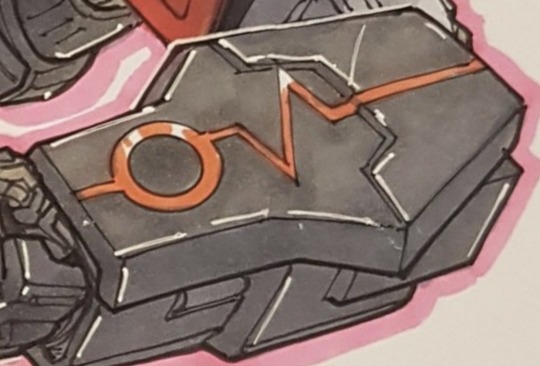
…which I can only assume is meant to be the Cybertronian version of the following, but with a circle for the spark instead of a heart:
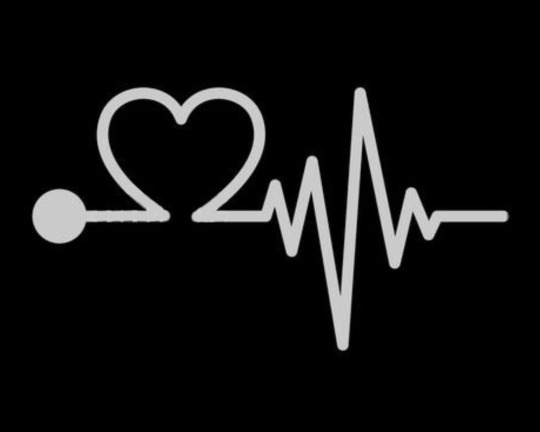
Meanwhile, Spinister and Nickel have nothing. Just their Decepticon badges.
Now, to combine these with faction badges:
Badge + medical symbol: Pharma, First Aid
Badge + no medical symbol: Ratchet, Fixit, Velocity, Spinister, Nickel
No badge + medical symbol: Flatline, Glit
No badge + no medical symbol: Ambulon
There are three medics who don’t wear badges; all of them are or were Decepticons. This is interesting on its own, but I’m more interested in how this may correlate to their attitudes towards treating Autobots:
Even though Glit’s KP version is willing to treat people regardless of faction, this is never confirmed for his IDW version. There isn’t enough evidence to infer how he feels about Autobots, or treating them. Yes, he was at Grindcore, but that says nothing about how he treated Autobot prisoners behind the scenes.
As for Ambulon, he switched sides and underwent the Act of Affiliation, but—evidently—not the Rite of the Autobrand. I could speculate all day about why, but that’s not important because, whatever the case, he treats patients of both factions without hesitation. Because he’s been on both sides, he has an externally observable reason to do so.
This leaves Flatline as the only badgeless—and only Decepticon—medic who’s proven to uphold a moral value of treating people regardless of faction. Unlike Ambulon, he has no externally obvious reason to do so, but he does it anyway because it’s personally important to him.
The following roams into headcanon territory, but based on what can be inferred from Flatline’s few appearances, I like to think his choice to not wear a Decepticon badge serves two purposes:
It’s his way of signaling to potential patients: “I don’t see you through the lenses of your faction and ideology, but as a person.”
It’s a personal reminder for himself of his commitment to being blind to factions when treating people; it’s a way of reminding himself he’s committed to the preservation of life first—not to any group or “order” of medical personnel.
This is not to say medics who do wear badges and belong to an order of medics don’t also treat patients based on similar values—as we see First Aid and Ratchet treating people of the opposing faction.
This is just me playing around with the possibility of inferring something deeper about Flatline’s character—what he values, how he sees himself and the world, what sets him apart from others “like him,” etc.
And besides, Autobot medics are expected to uphold their medical oaths. Decepticon medics—perhaps unfairly—are assumed to be lax in that area, so it means more to have a Decepticon medic who holds to their personal moral values despite the general attitude towards the enemy seen in many of their comrades.
On that note, I would love to know how Tarn sees Flatline…
A Decepticon who refused the Rite of the Deceptibrand.
A Decepticon who refused to cut into his spark casing to signify his commitment to the Cause.
A Decepticon who values commitment to his personal morals above adhering to any external ideology.
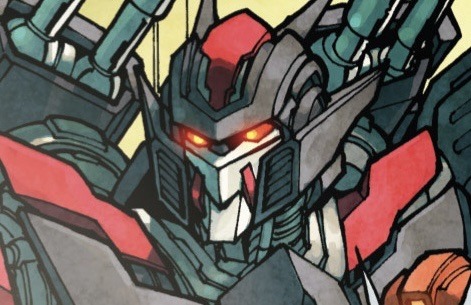
#idw transformers#maccadam#idw1#tf idw meta#tf idw character analysis#idw flatline#dr. dark mode#nova’s nerding out again
107 notes
·
View notes
Text

“We want to be on your side.”
This scene is meant to be funny, but I see something more that provides insight into Prowl’s character.
The Constructicons Know
There are two things that stand out to me: Hook’s choice of words, and the nature of Prowl’s reaction.
Seeing as “your side” can easily be misunderstood as referring to the Autobot side, Hook could have said something more obvious, like, “Hey. We want to hang with you, Prowl.”
But Hook didn’t do that. He chose the phrase, “We want to be on your side.”
Why?
Well, Hook and the rest of the Constructicons were inside Prowl’s head as much as he was in theirs. They didn’t just know his thoughts. They had access to Prowl’s deepest desires.
And what was it that Prowl said to Arcee in Issue #1?
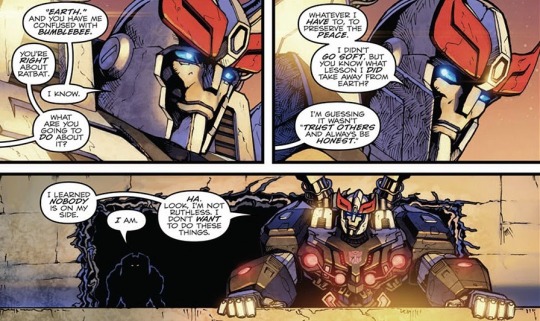
“I learned that nobody is on my side.”
Yes, Prowl wants peace. He wants order.
But just as much, he wants to know that someone will have his back—that there will be someone competent to fall back on when the world is going up in flames.
In spite of all his scheming and pushing people away, Prowl desperately wants to know that there is someone he can trust to do what needs to be done to work toward his ideal: Lasting peace.
When the Constructicons were in his head, they saw that. These five “vile” Decepticons understood Prowl better than any Autobot ever did.
And that scares the hell out of Prowl.
How NOT to accept a compliment

He knows the implications of what the Constructicons are saying. They’re basically telling him that they want what he wants. They’re also telling him, “We’ve seen what others consider to be the worst of you, and we think you’re awesome—not in spite of it, but BECAUSE of it.”
These Decepticons want to help him bring about his ideal, and this goes against all the preconceived ideas Prowl has about Decepticons.
But notice how Prowl stops himself from telling them that their admiration is crazy. It’s obvious that the Constructicons are more likely to listen to Prowl than anyone else, so why tell ‘Bee to answer for him?
Personally, I think he’s torn between agreeing with the Constructicons and telling them to get lost. Prowl wholeheartedly believes the way he thinks is great, but if he tells that to them in this moment, that would mean he’s allowing them into his life in some way, which he doesn’t want.
However, there’s a part of him that can’t tell the Constructicons their admiration is crazy, because this is all he’s ever wanted—to know that someone sees things his way and is willing to go along with his methods.
So, while he’s trying to sort out all the conflicting information and feelings, Prowl outsources the question to someone who does think his way of doing things can be…problematic at times. This way, he’s not technically saying no to something he’s always wanted, and he’s avoiding encouraging the Constructicons.
It’s the only way he knows how to override his internal conflict.
#idw transformers#maccadam#tf idw#idw1#tf idw meta#tf idw character analysis#idw prowl#the wolf of petrex#nova reads exRiD#nova’s nerding out again
659 notes
·
View notes
Text



Rodimus is a blorbo I enjoy dunking on a lot, but I still love him. He’s a mess, but he’s not a total fool.
As seen in the pages above, he has a knack for understanding people. This sets him apart from every other Prime in IDW.
In Lost Light #7, Drift tells Rodimus:
“You know, when it comes to other people you can be so insightful… And yet you don’t really know yourself. You’re your own blind spot.”
Is Rodimus a little self-obsessed? Yes.
Does Rodimus struggle with self-awareness? Yes.
But is Rodimus a total idiot when it comes to people? Absolutely not.
I love how JRo took this one trait Barber alluded to in exRiD and emphasized it in Lost Light. It really adds to Rodimus as a character.
#I’m still gonna poke fun at the blorbo though lol#idw transformers#maccadam#tf idw#idw1#tf idw meta#tf idw character analysis#exrid#lost light#idw rodimus#nova reads exrid
70 notes
·
View notes
Text
Thanks for tagging me, @onewingedsparrow! ���
Rules: post the names of all the files in your WIP folder regardless of how non-descriptive or ridiculous. Let people send you an ask with the title that most intrigues them, and then post a little snippet of it or tell them something about it! And then tag as many people as you have wips. I have deemed that this isn’t just for writing either. Sketch titles? Comics? Dnd campaigns? If you have an unfinished project, it counts!
I don’t exactly have files, but I do have a ton of ideas sitting in my notes—most of which I won’t mention because I’m more than a little protective of them. I also won’t tag as many users as I have ideas since I’m not buddy-buddy with that many people on here. Lol
Feel free to ask about more than one of these. (Even followers and mutuals I didn’t tag!) I’m eager to share:
Theory, Analysis, and Commentary posts:
Safest Decepticons (TFP)
Gladiatorial Combat Types (TFP/Aligned)
Handedness of the Nemesis Gang and Team Prime (TFP)
Thirteen Primes Polarities/Personalities (Aligned/TFP)
Faith Spectrum (MTMTE/LL)
Reminds me of a certain hedgehog (IDW 1/MTMTE/LL)
Don’t Call Drift a Decepticon (IDW 1/MTMTE/LL)
Random Soundwave observations (Cyberverse)
Moodboard series:
Yin and Yang (Multiple Continuities)
The Thirteen Primes (TFP)
How I See Them (Multiple Continuities)
Memes and other funny things:
The ones with the funny heads (MTMTE & TFA)
Drift is rich and the others are not (MTMTE/LL)
Cool eyewear (MTMTE)
Pretty Things Inside (TFP)
How I See the TF Fandom (gen)
Things I may never write:
A Letter to the One Whose Body I Inhabit [pending title] (MTMTE)
How Many Suns Have You Killed? (TFP)
Miscellaneous:
MBTI & Enneagram Types of Characters (Multiple Continuities)
‘Thank You for Leading the Way’ (IDW 1/MTMTE/LL)
Random Soundwave headcanons (TFP)
Character playlists in progress (IDW 1 & MTMTE/LL)
Tagging:
@karlyanalora @cyber-streak-2 @lets-try-some-writing @sphnyspinspin @naturally-alien @aecholapis @robotzzz
8 notes
·
View notes